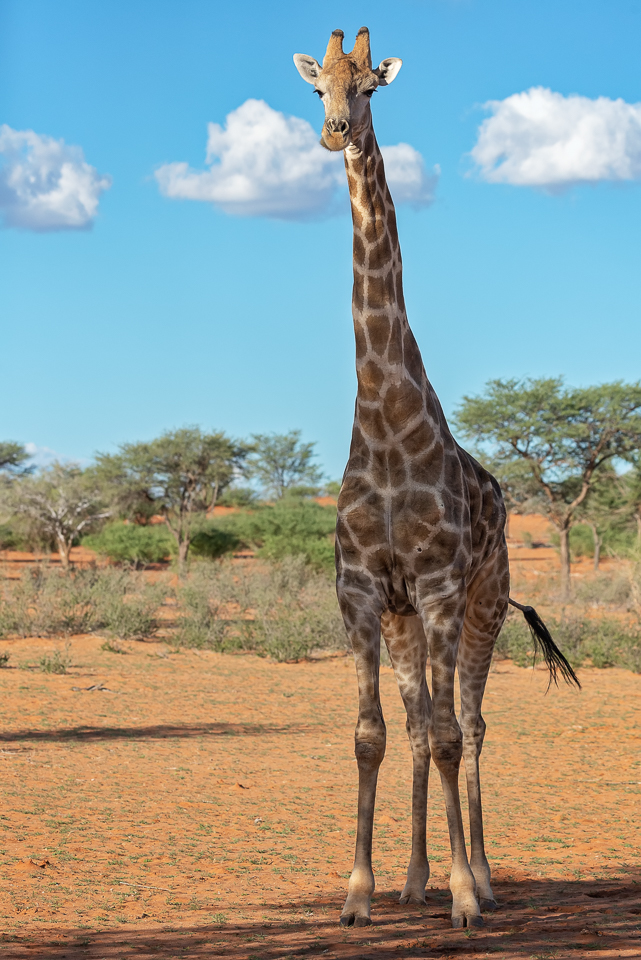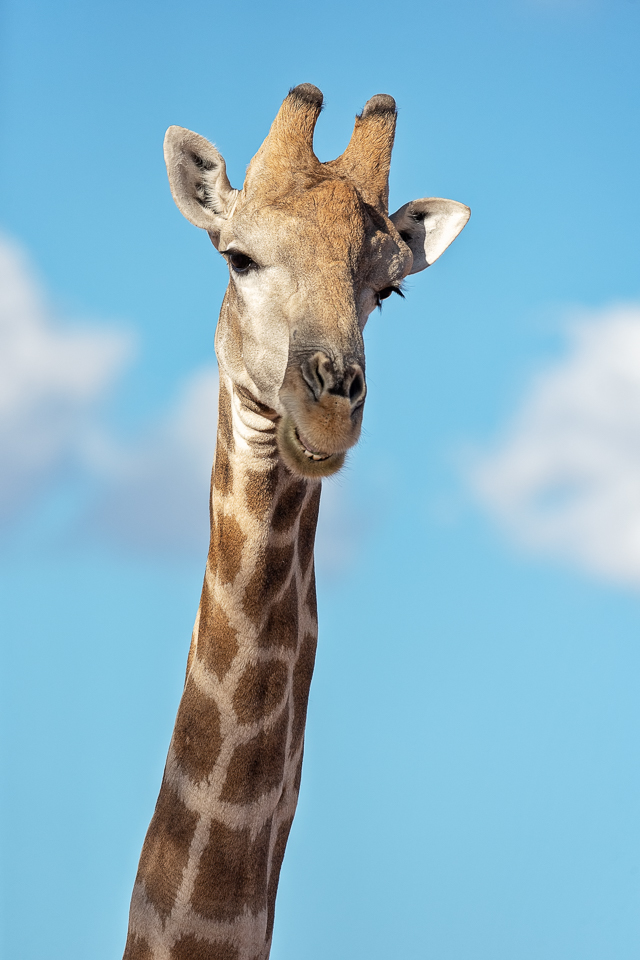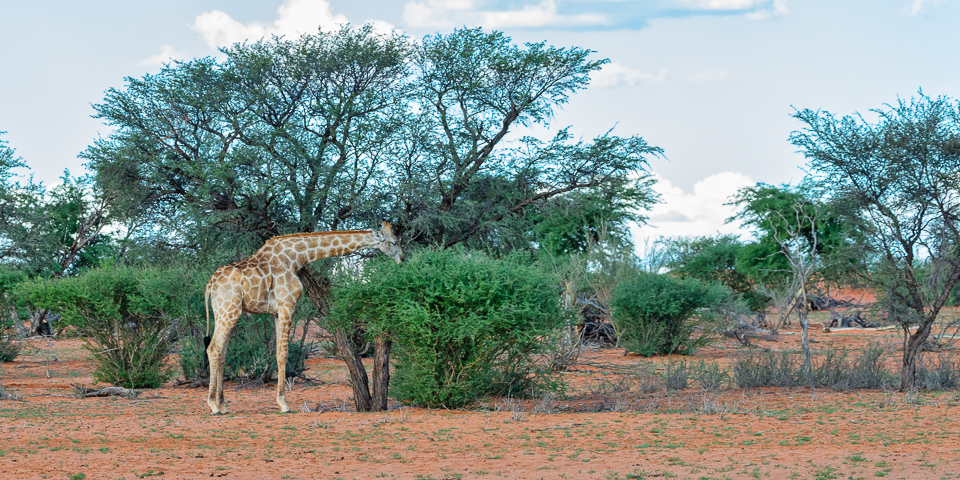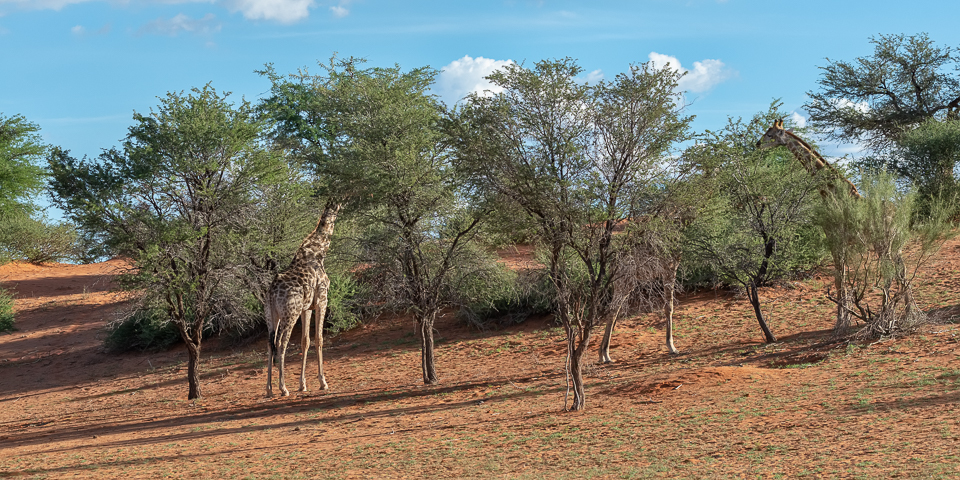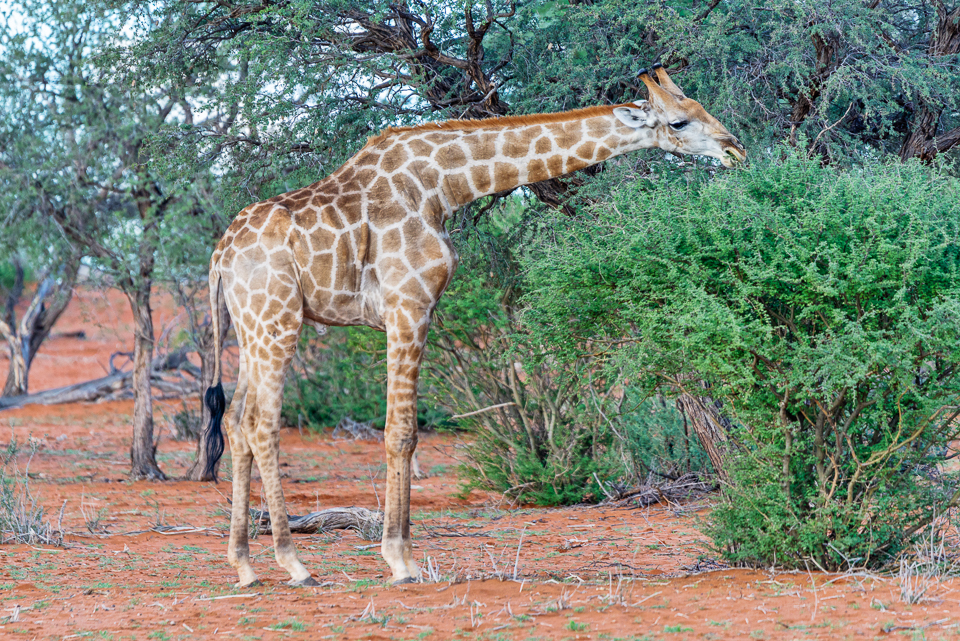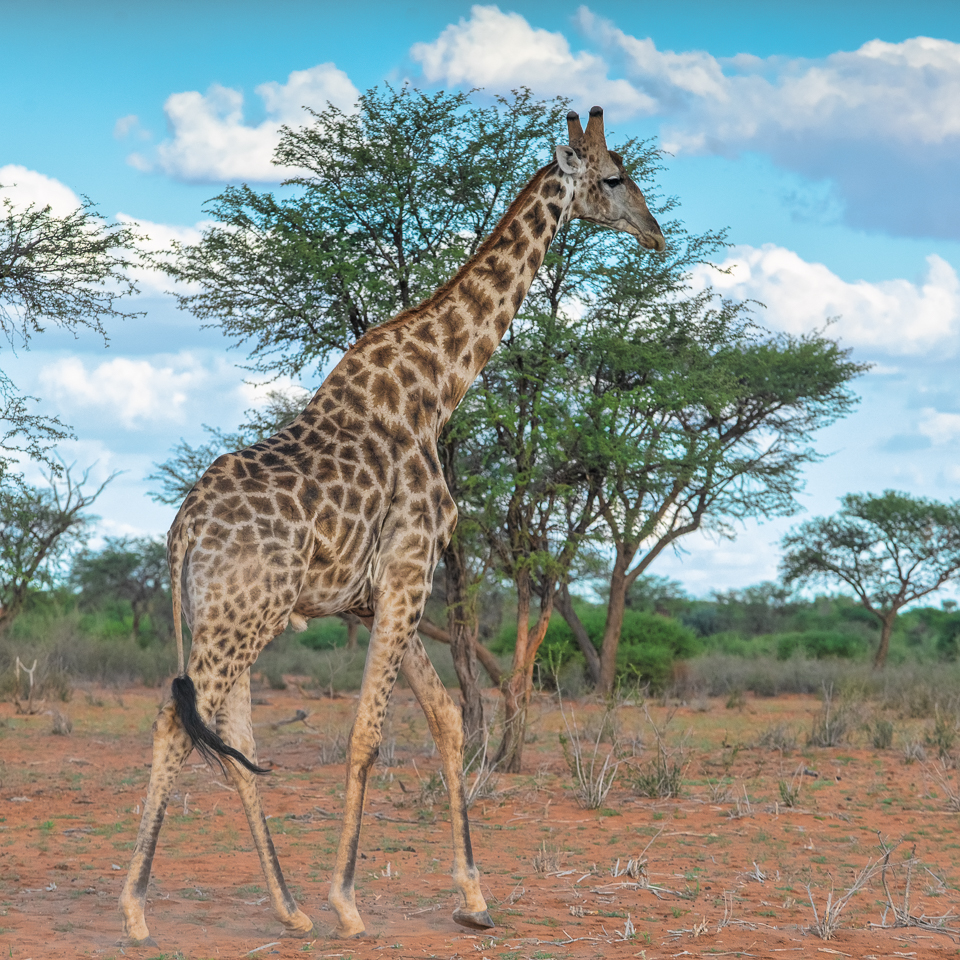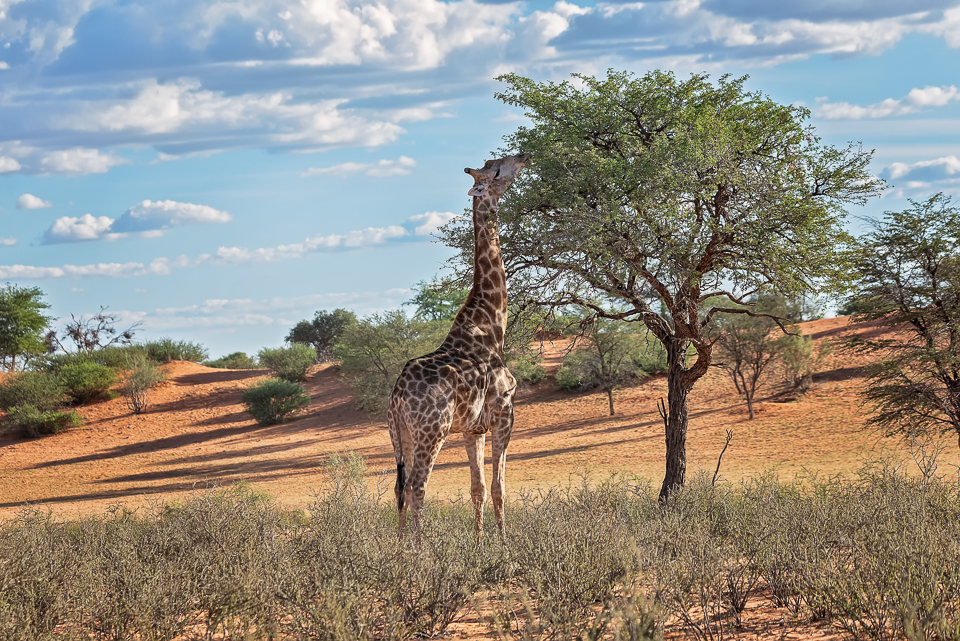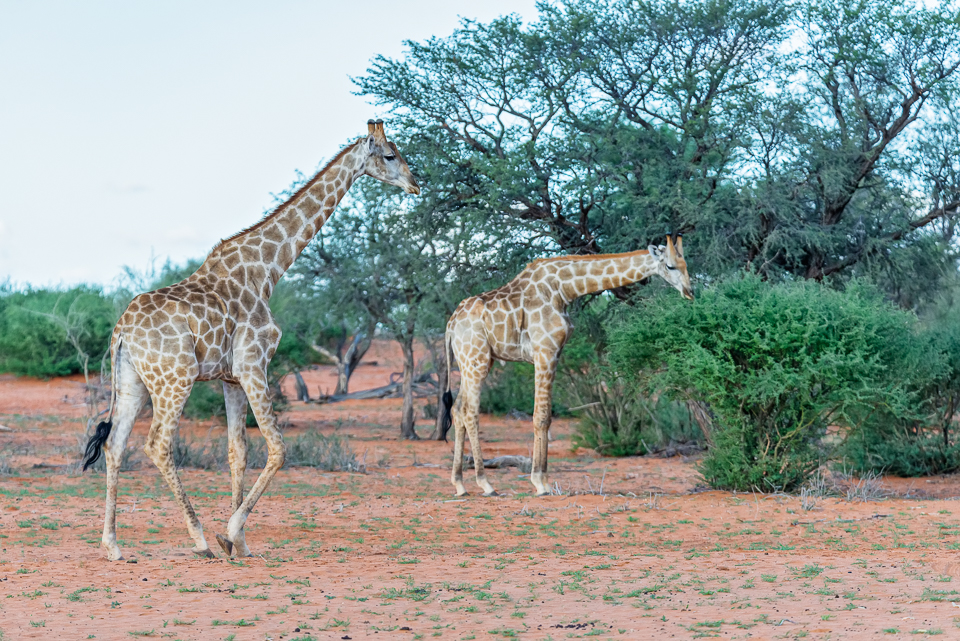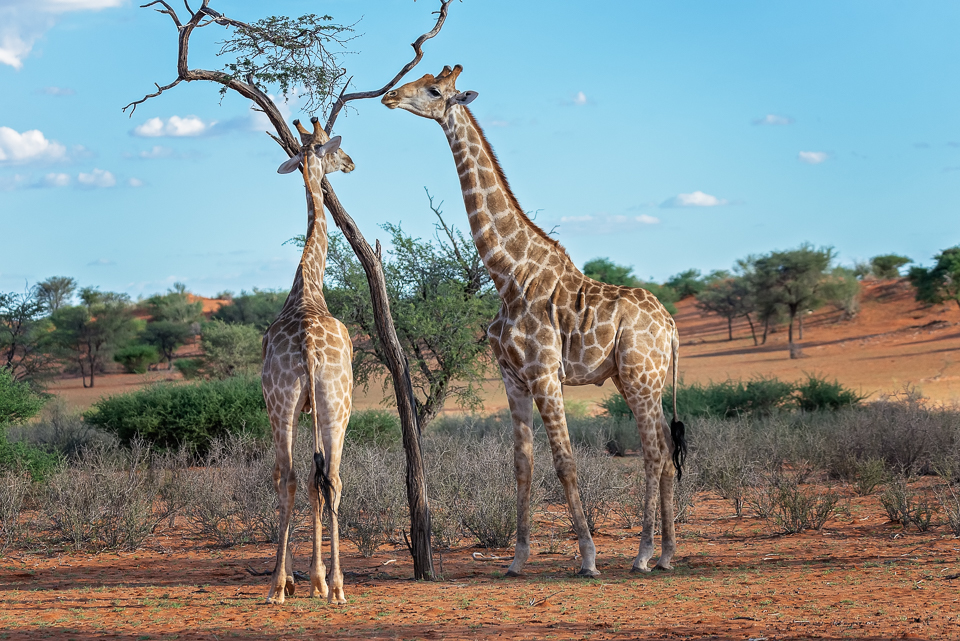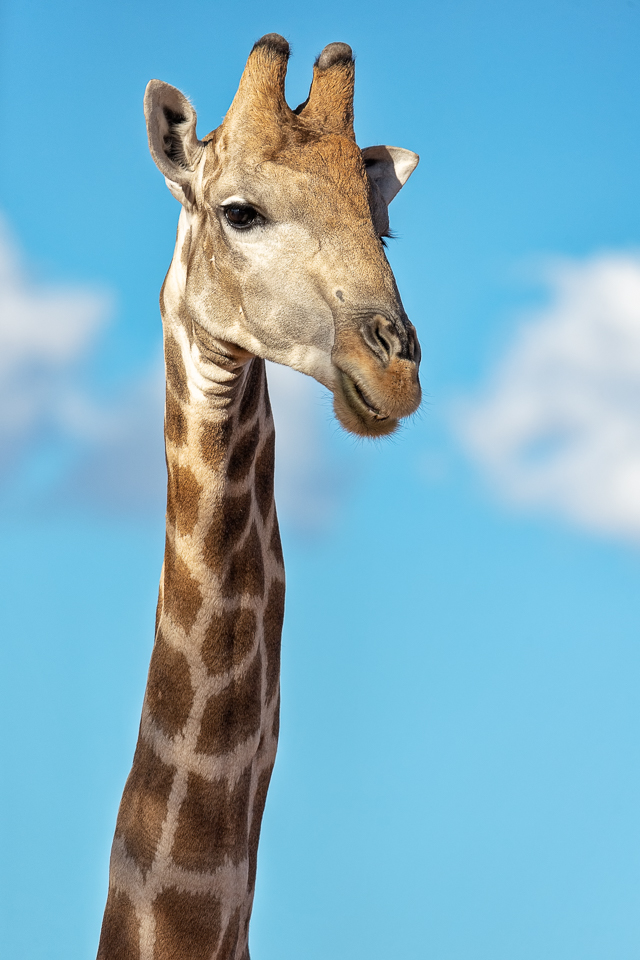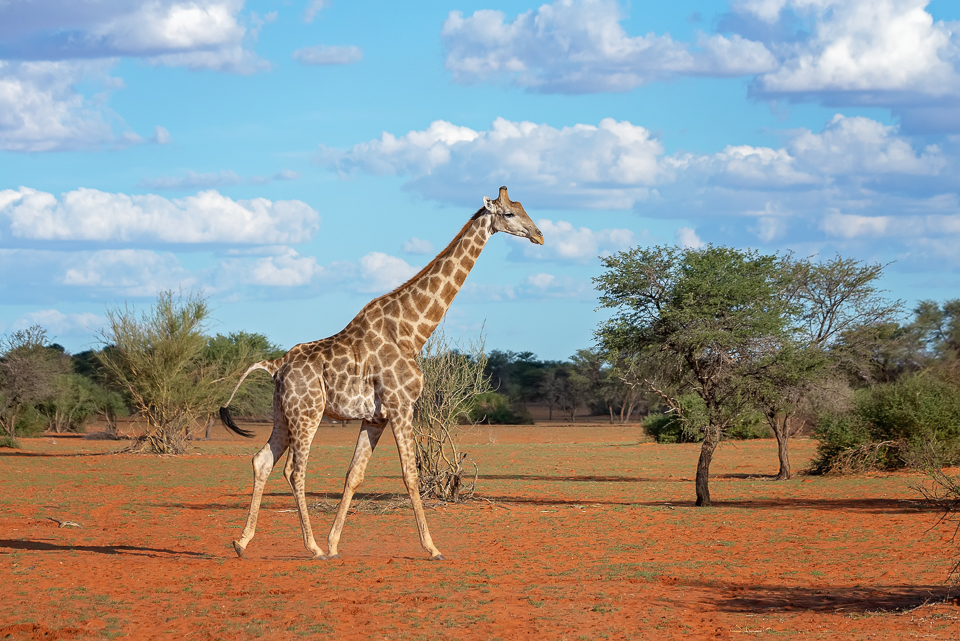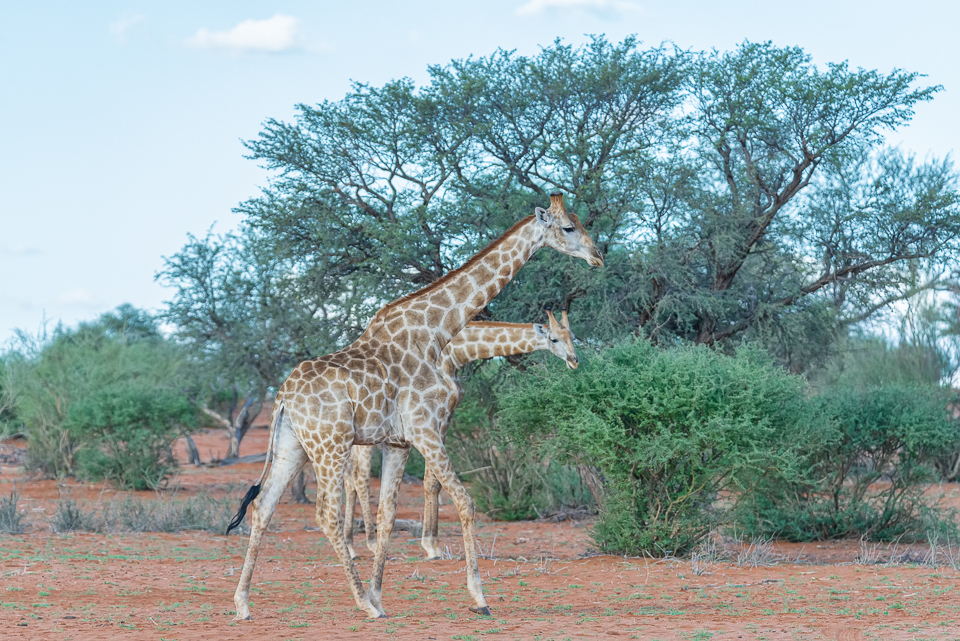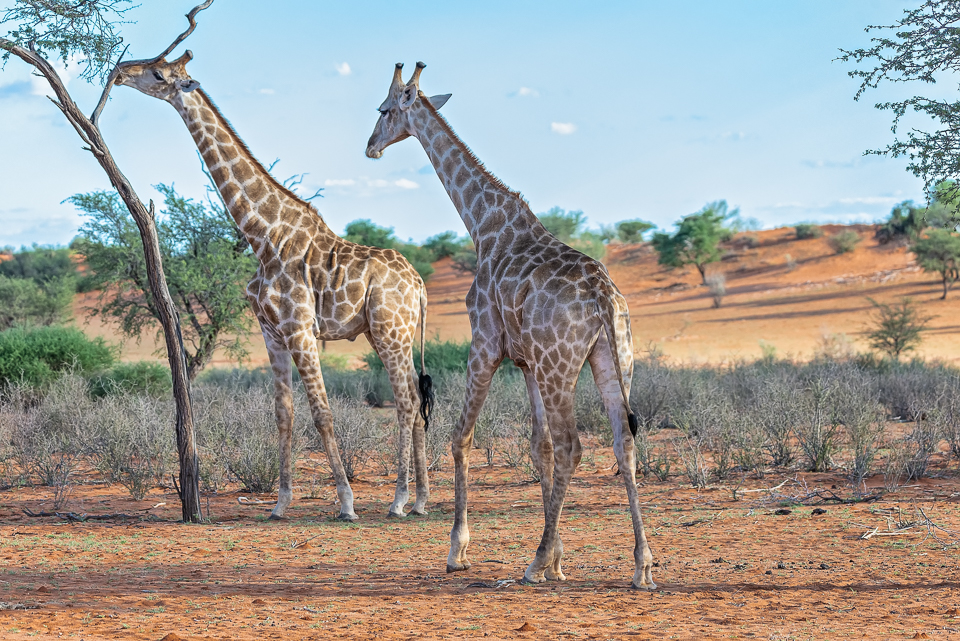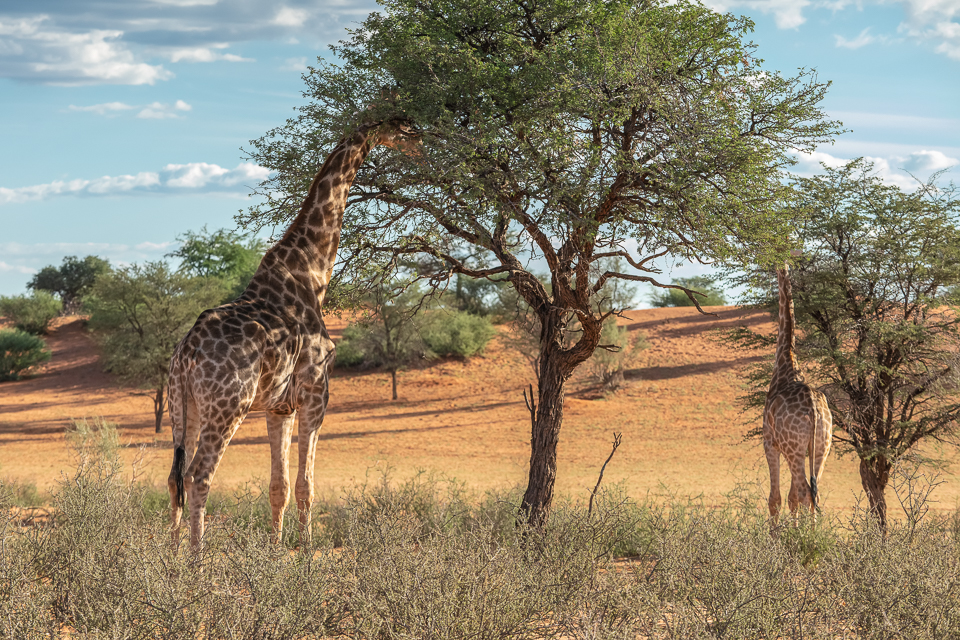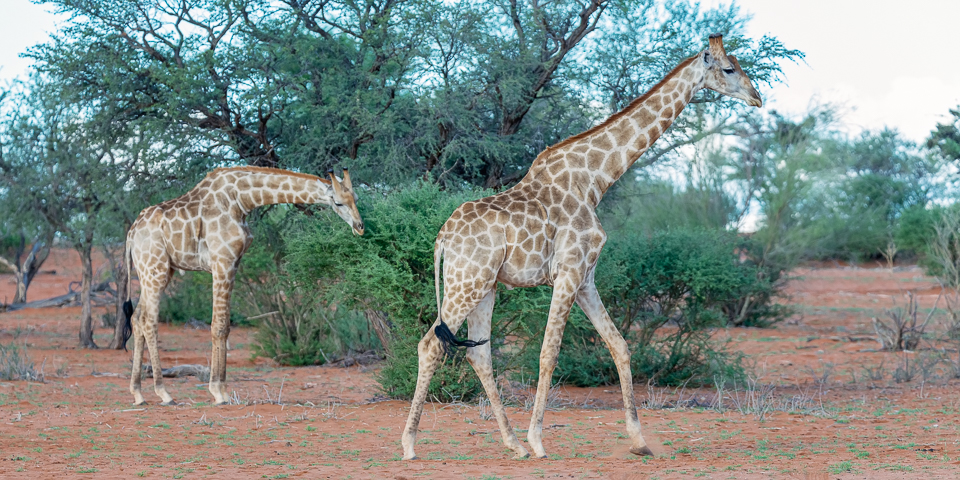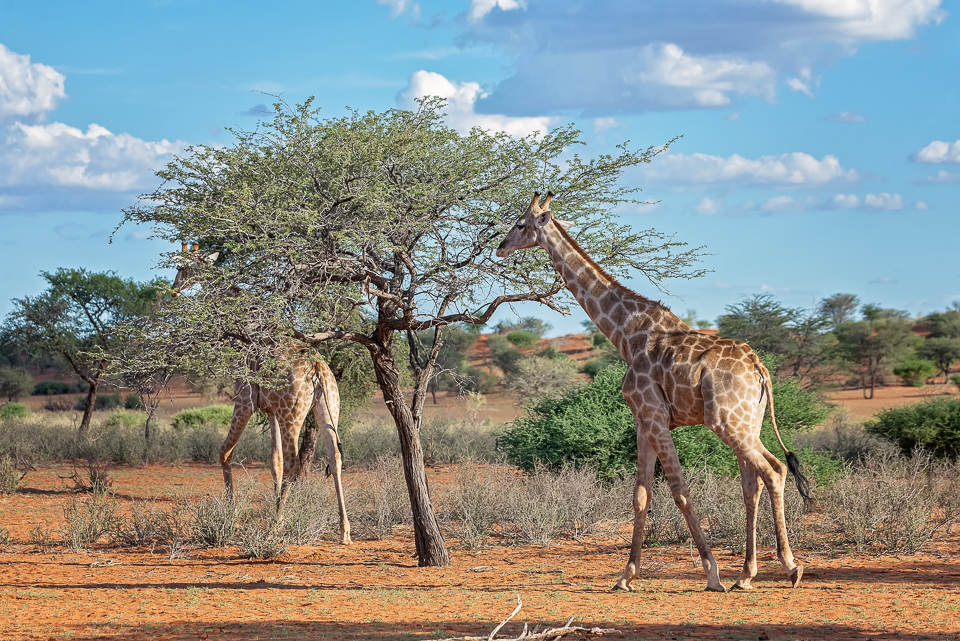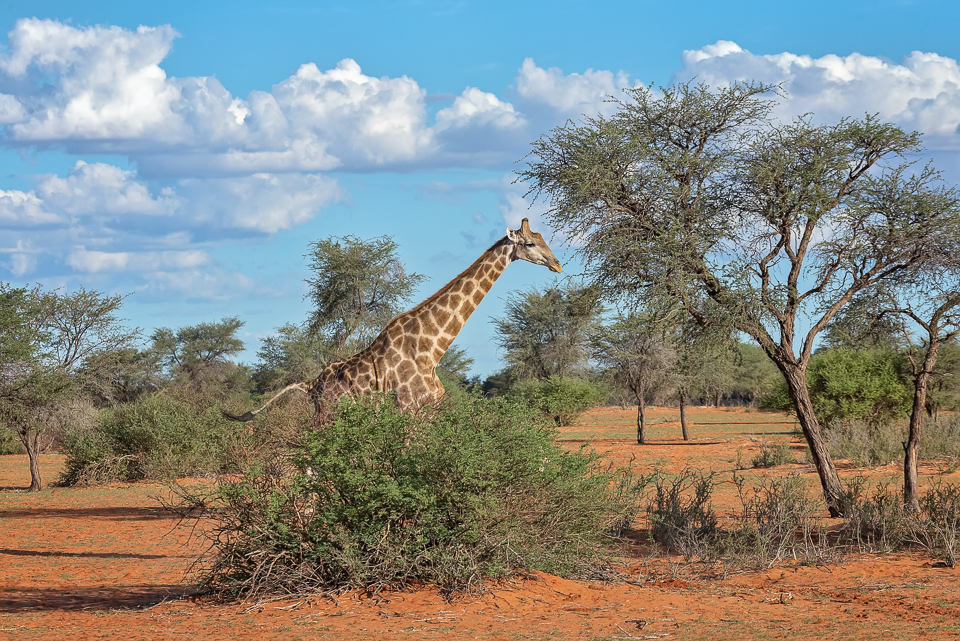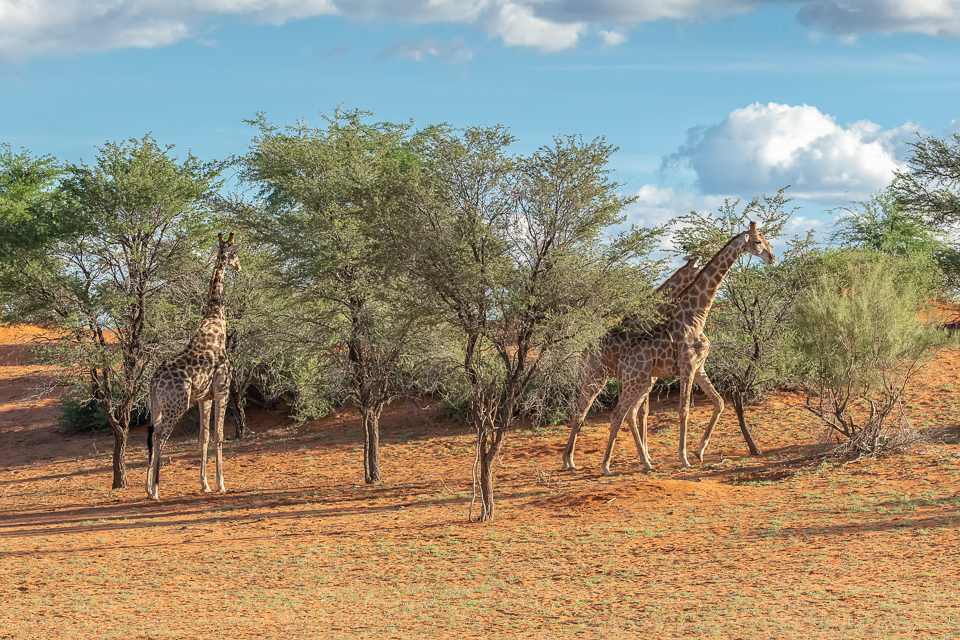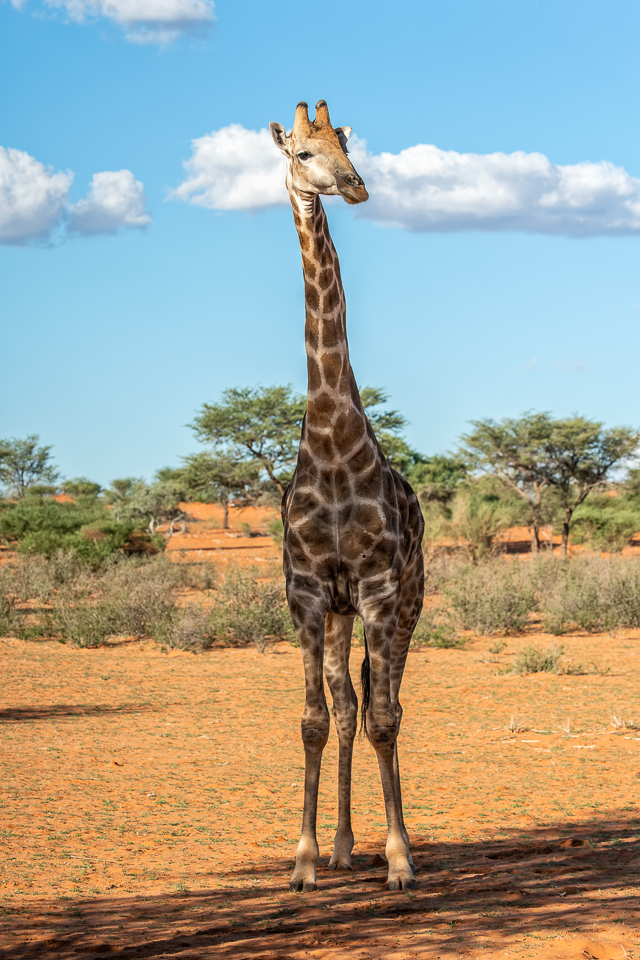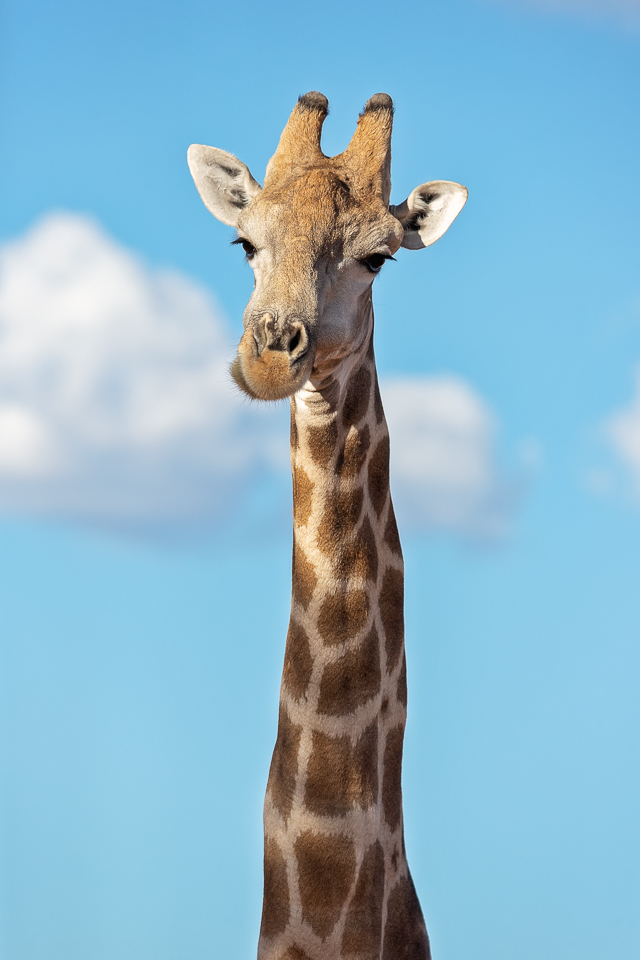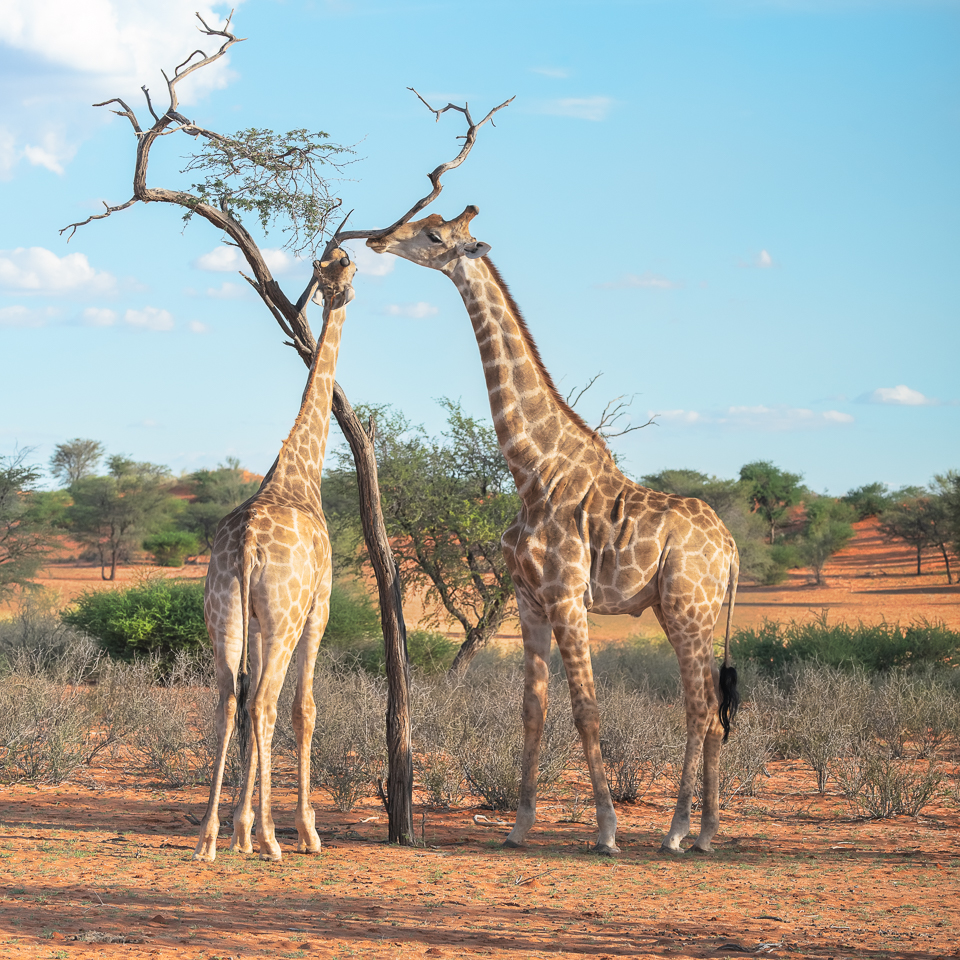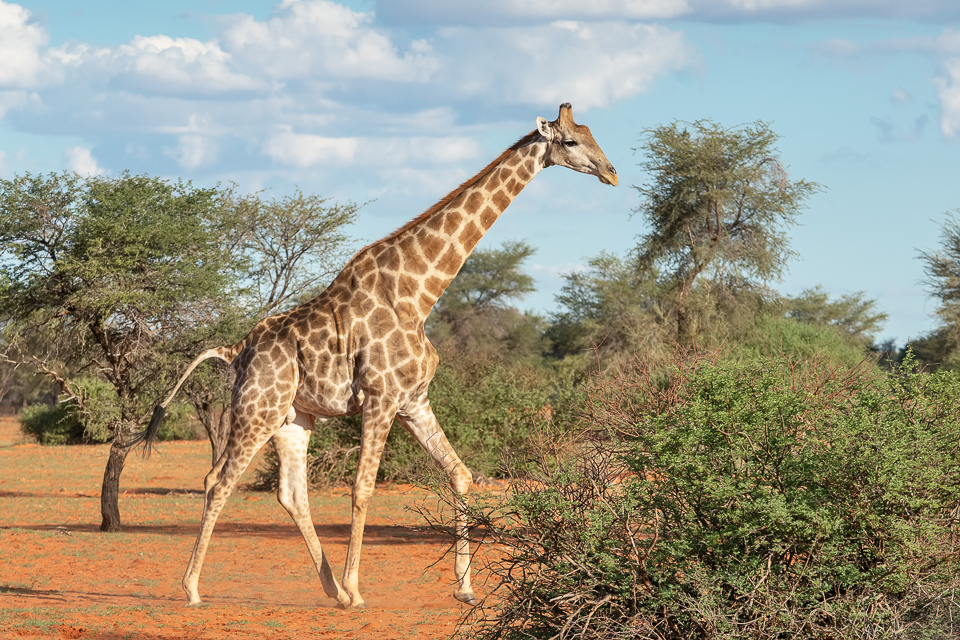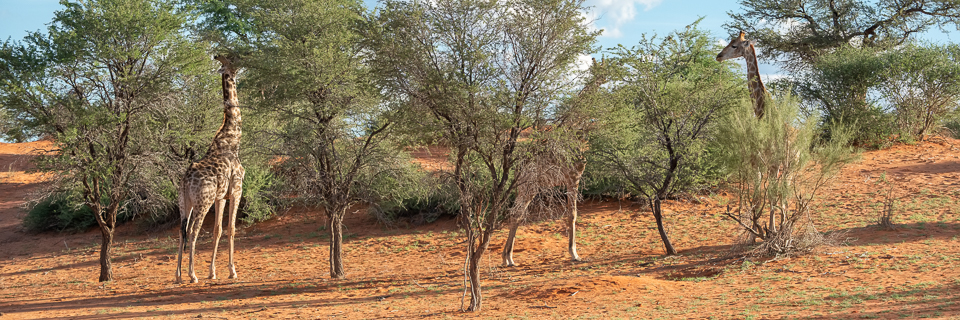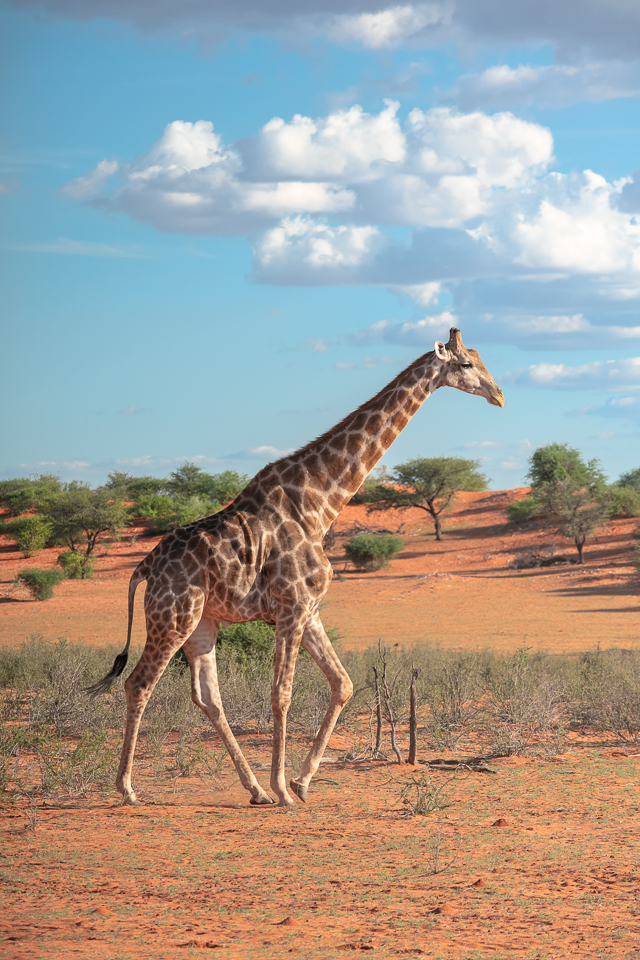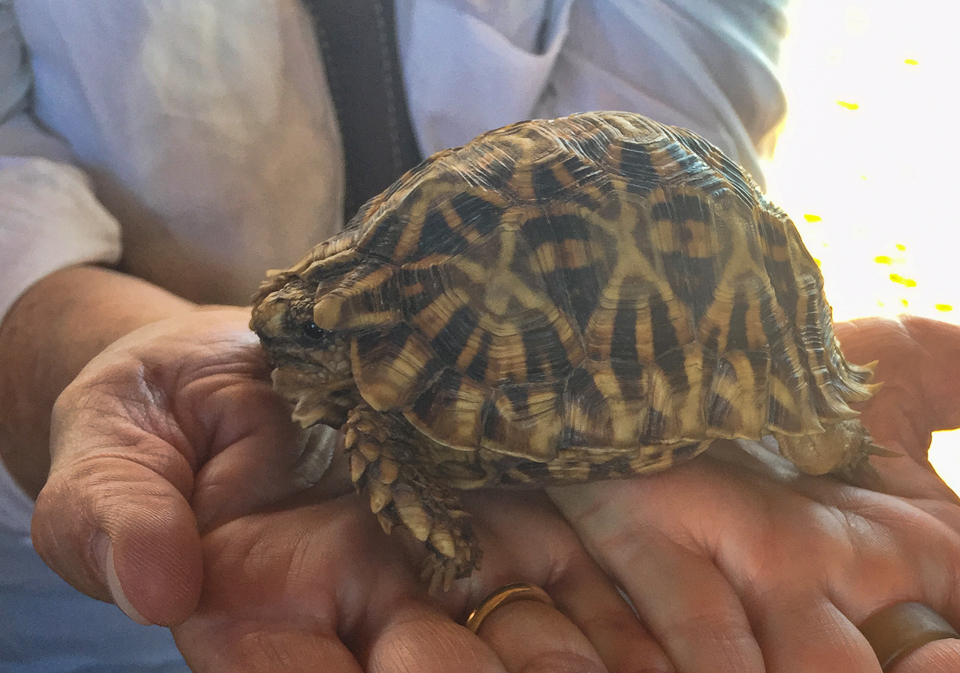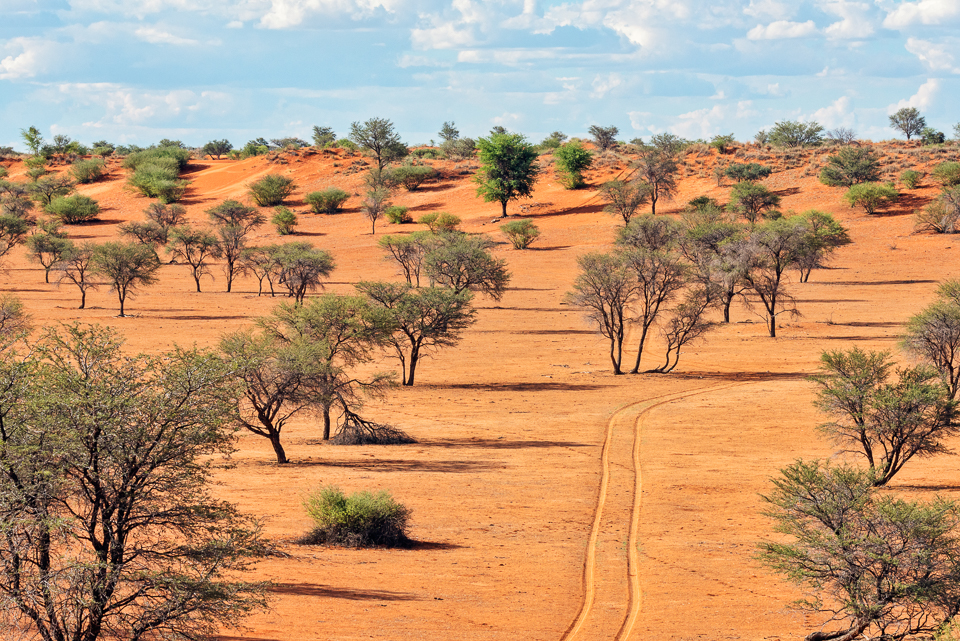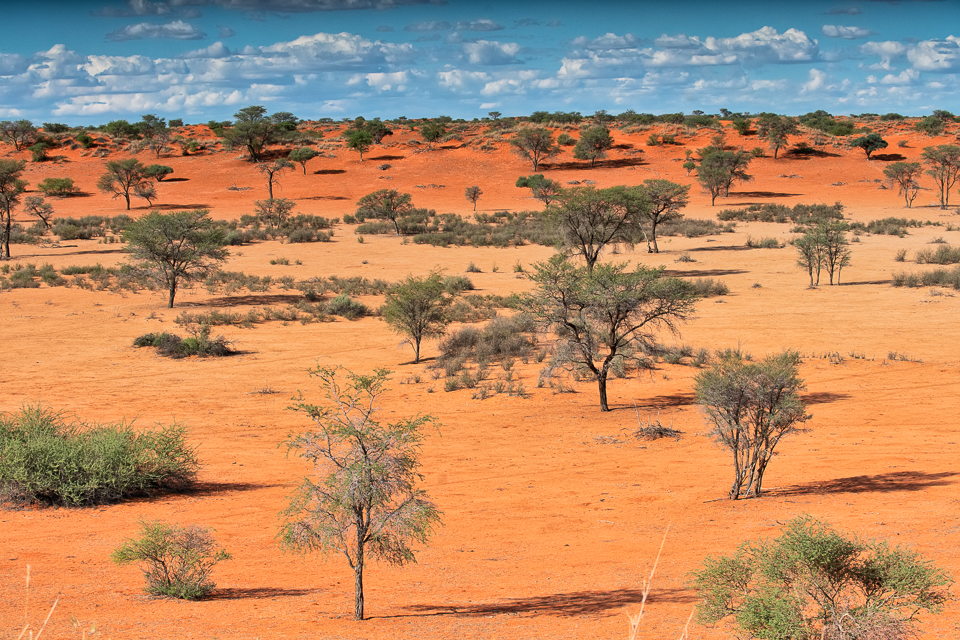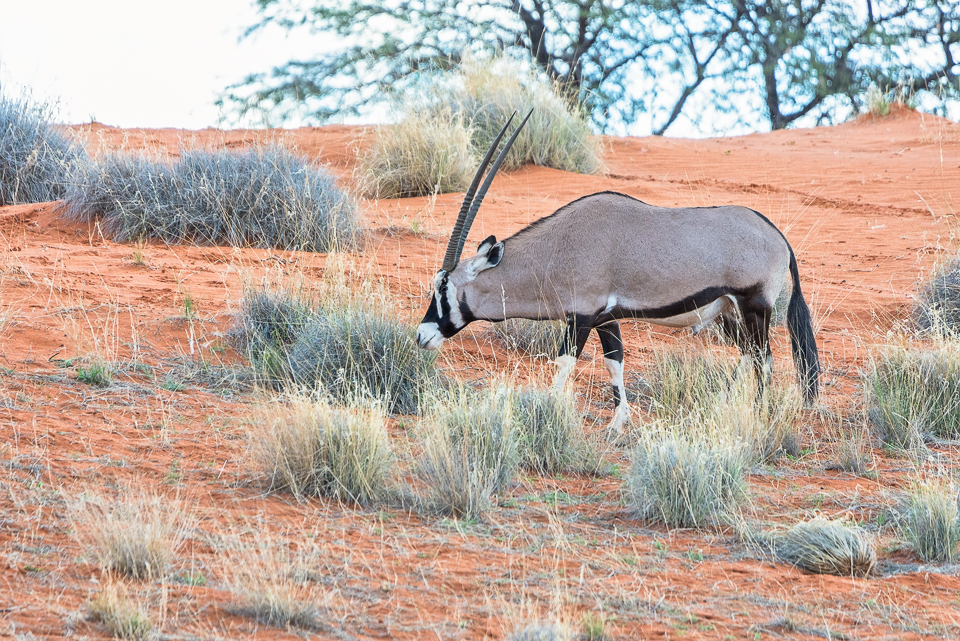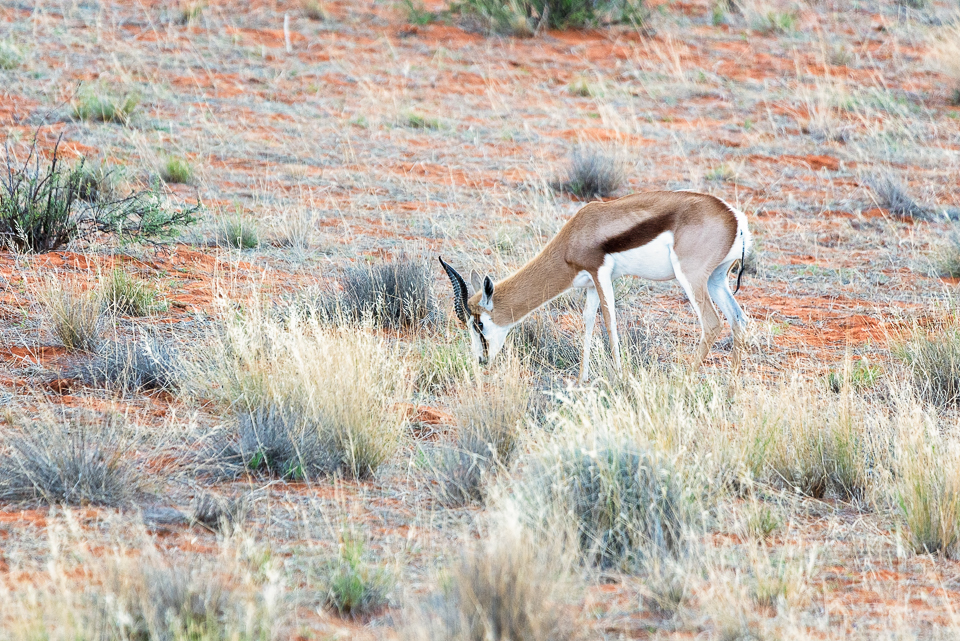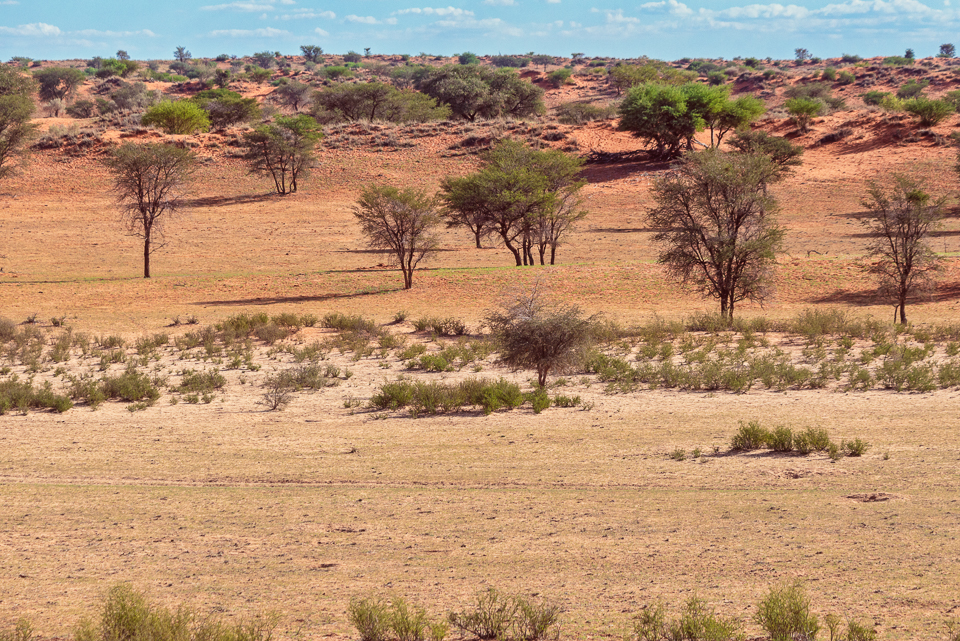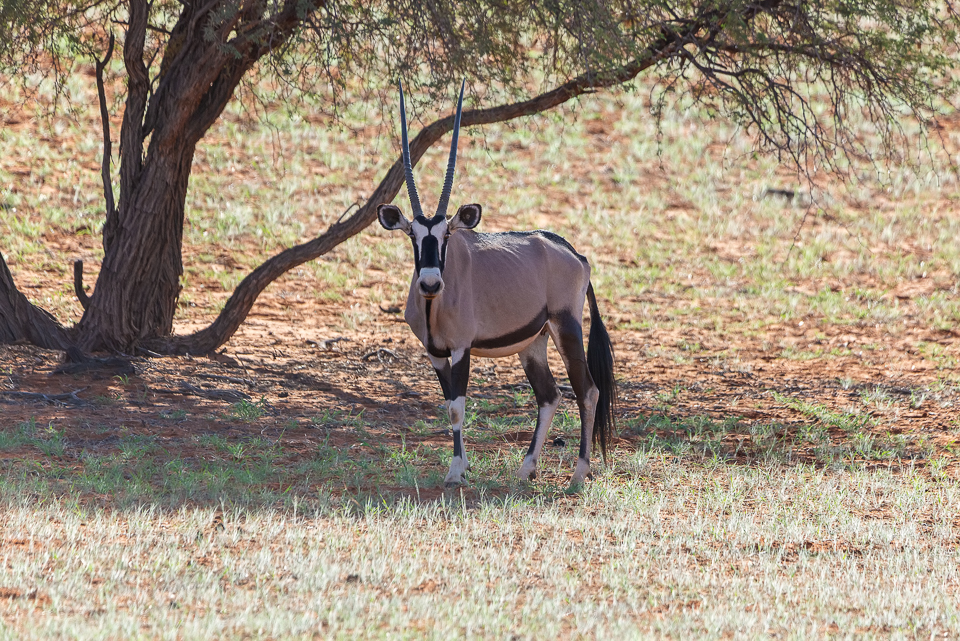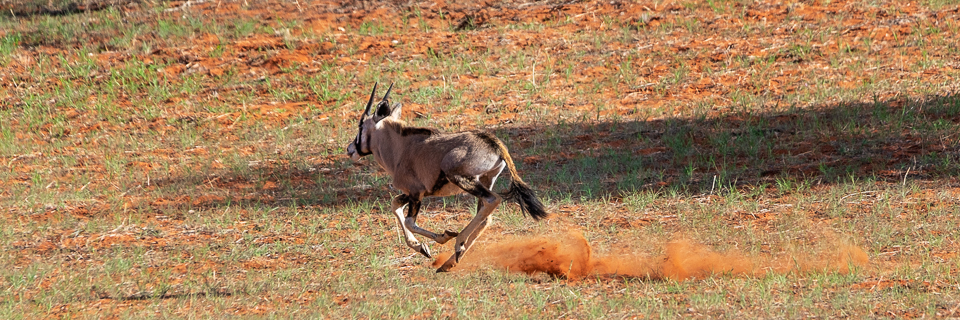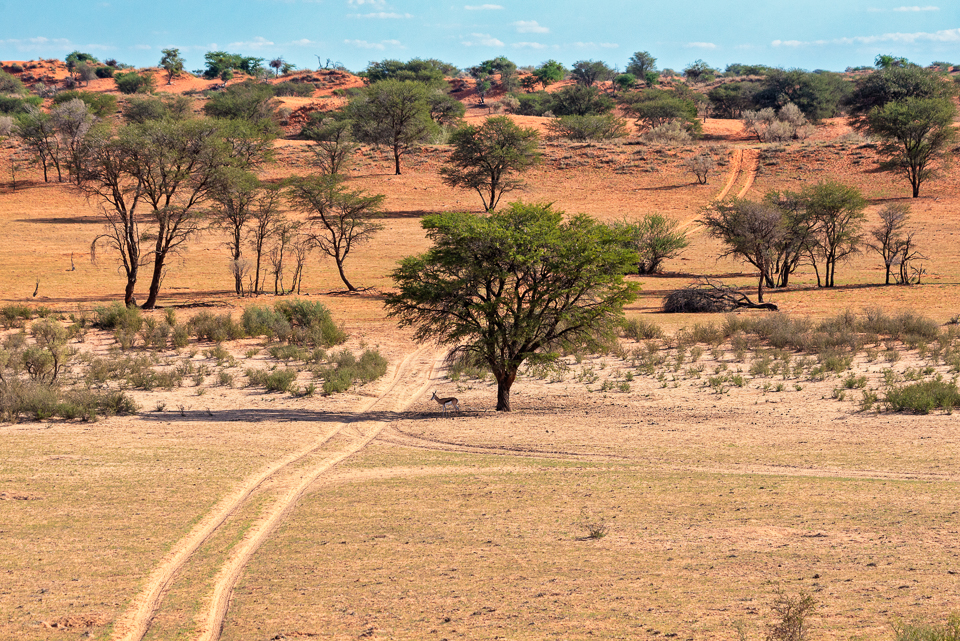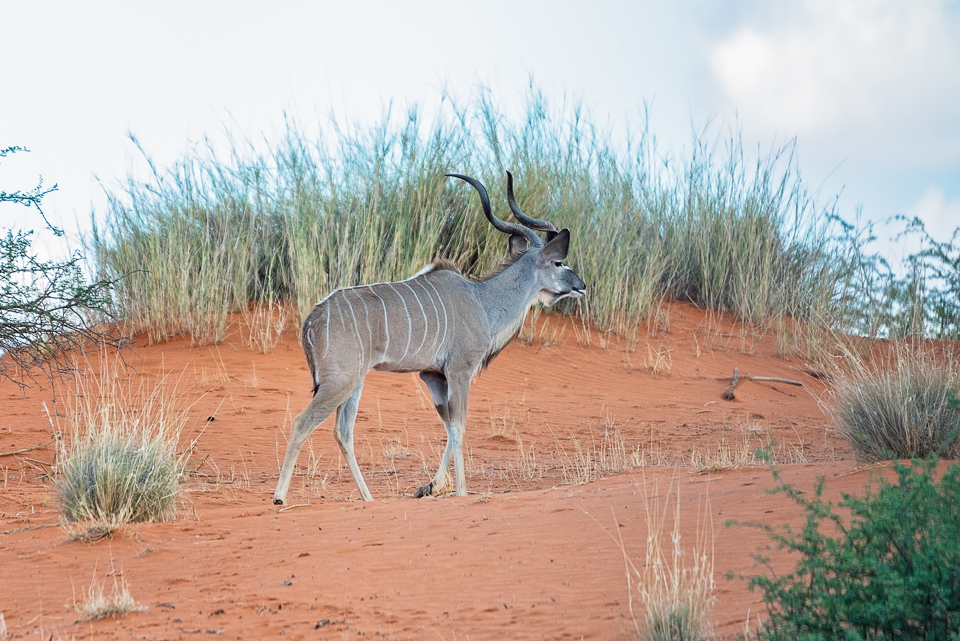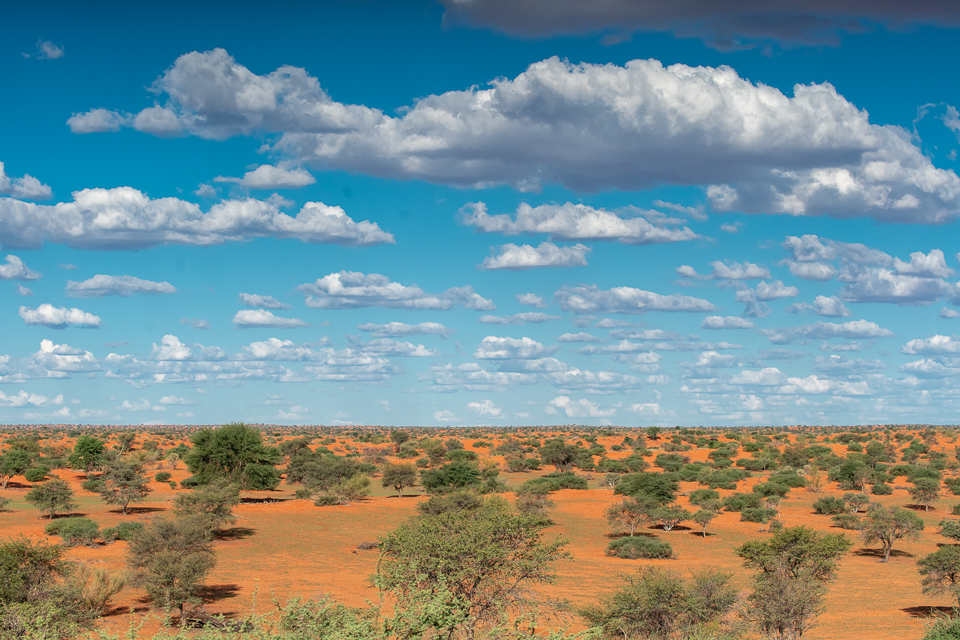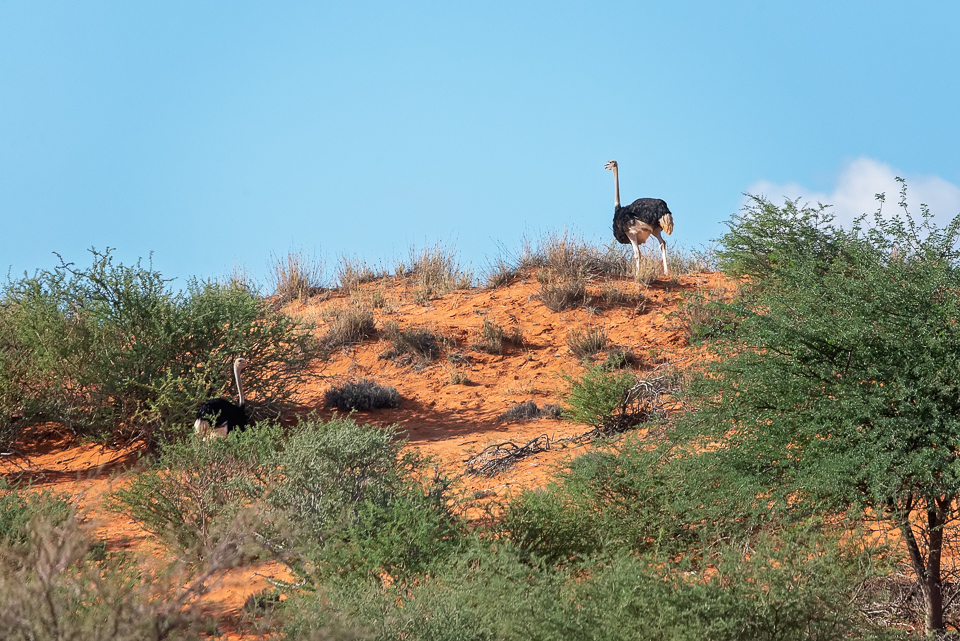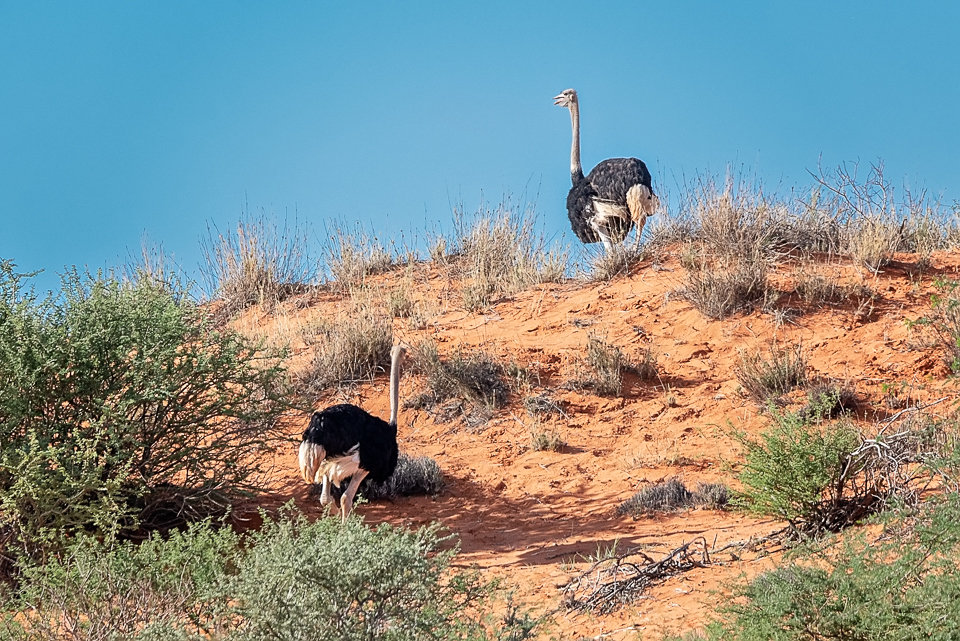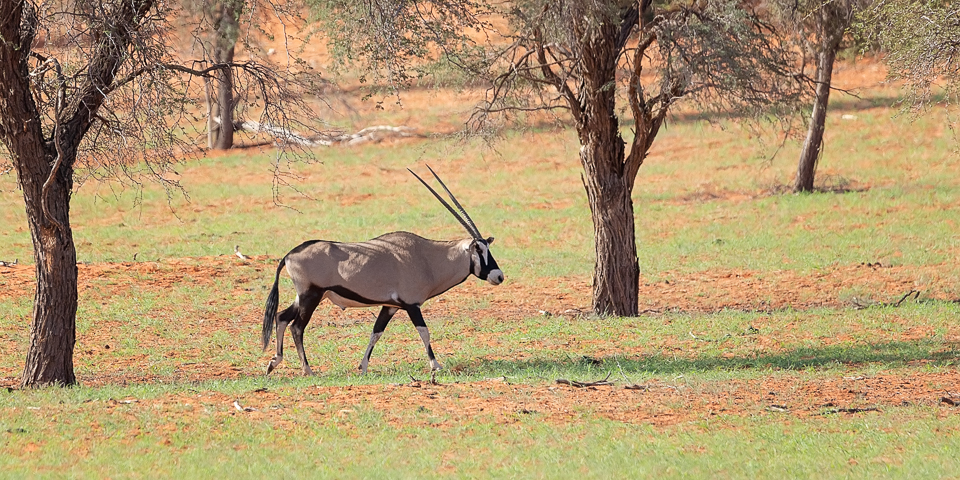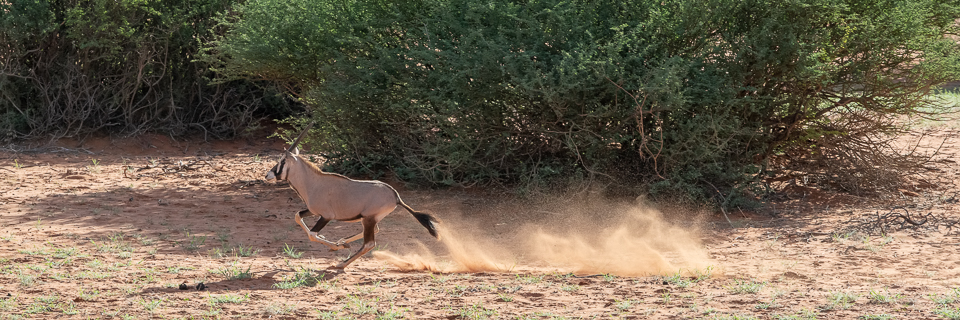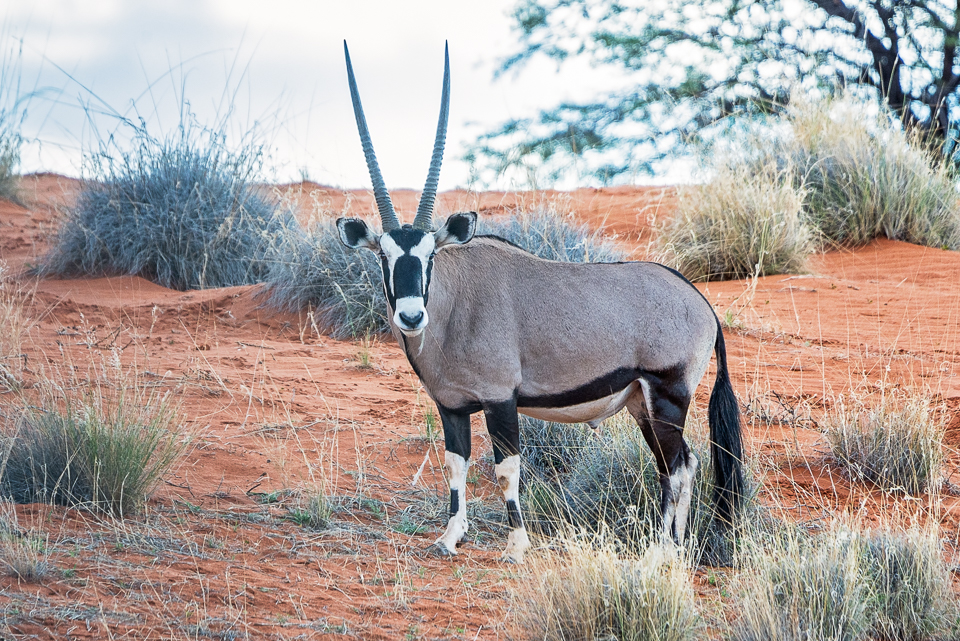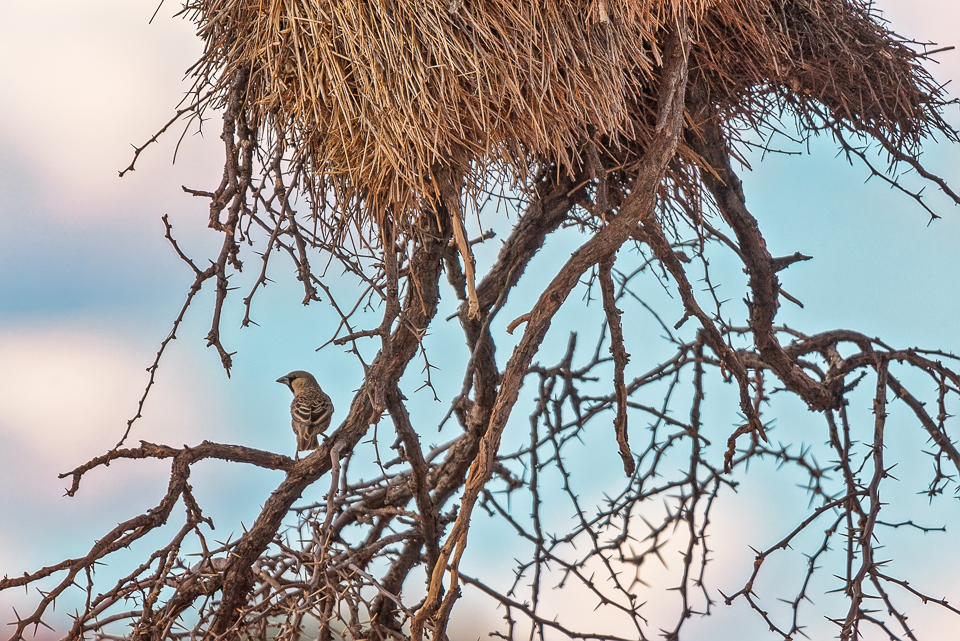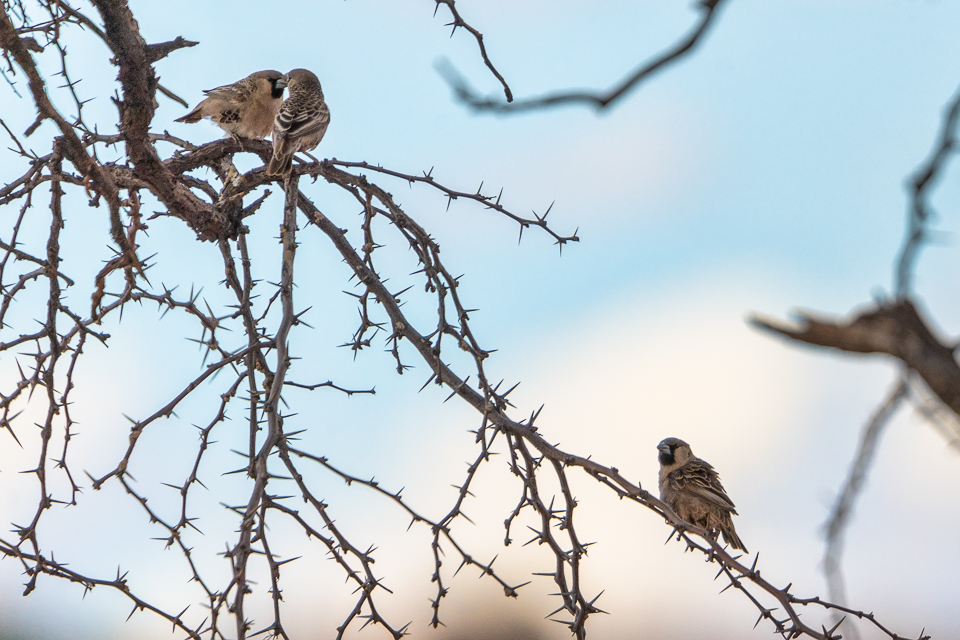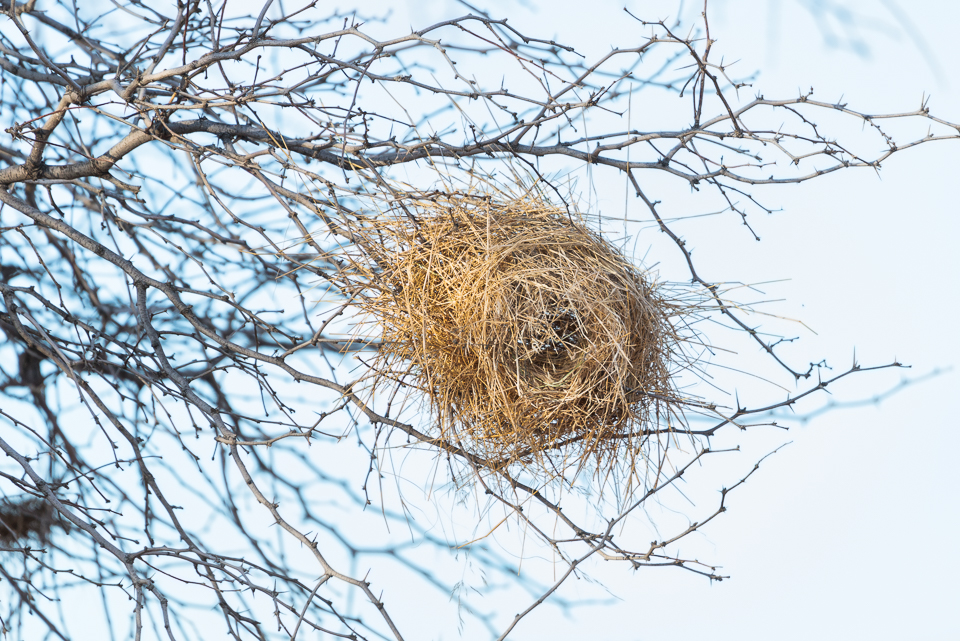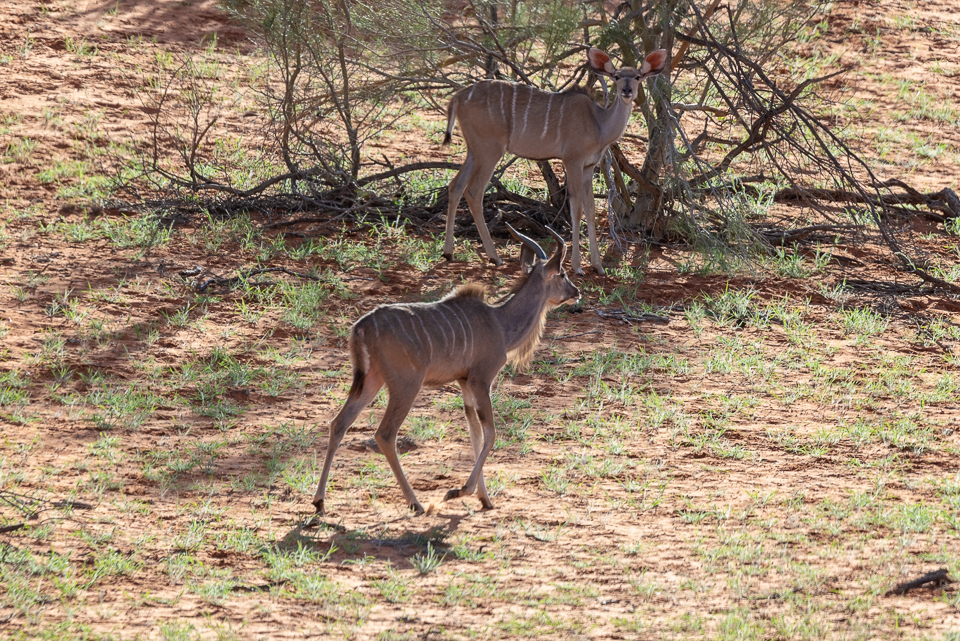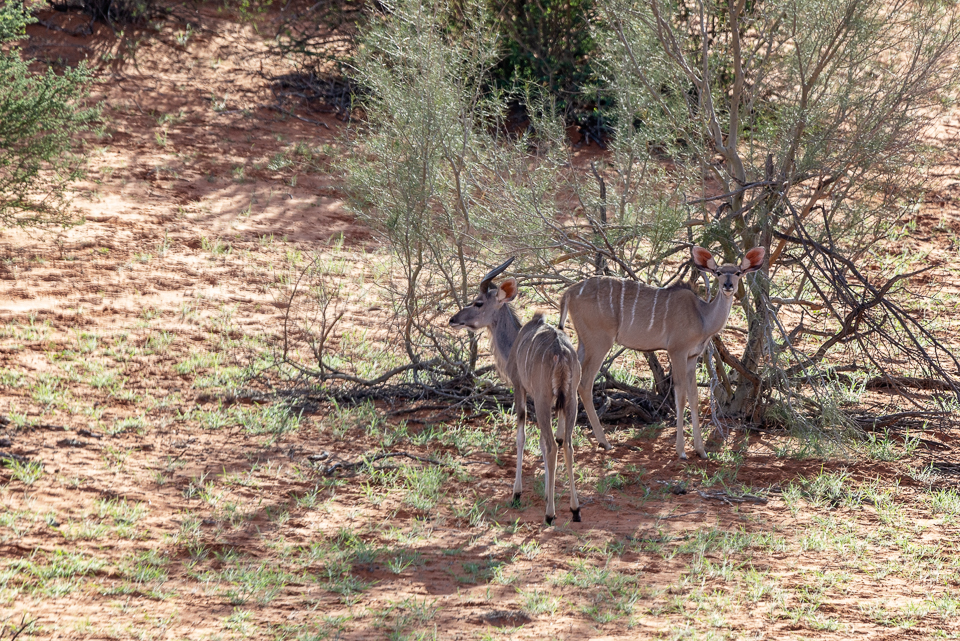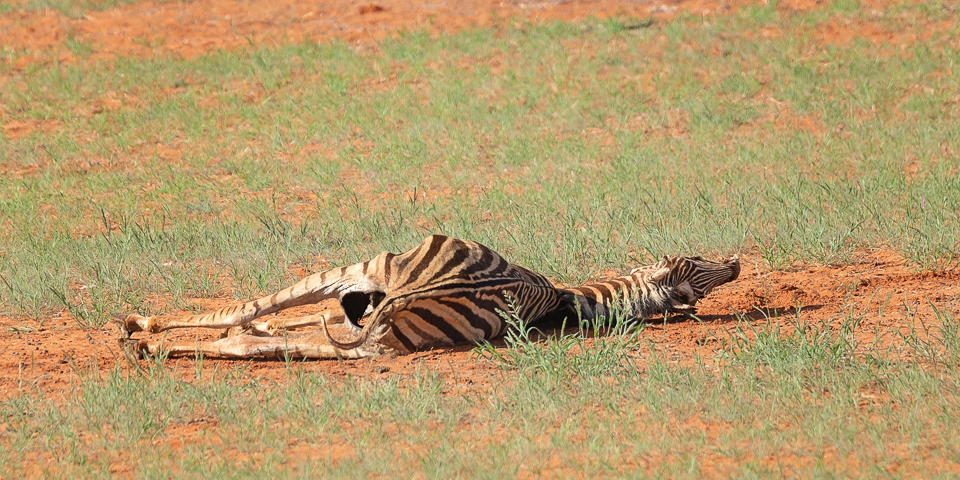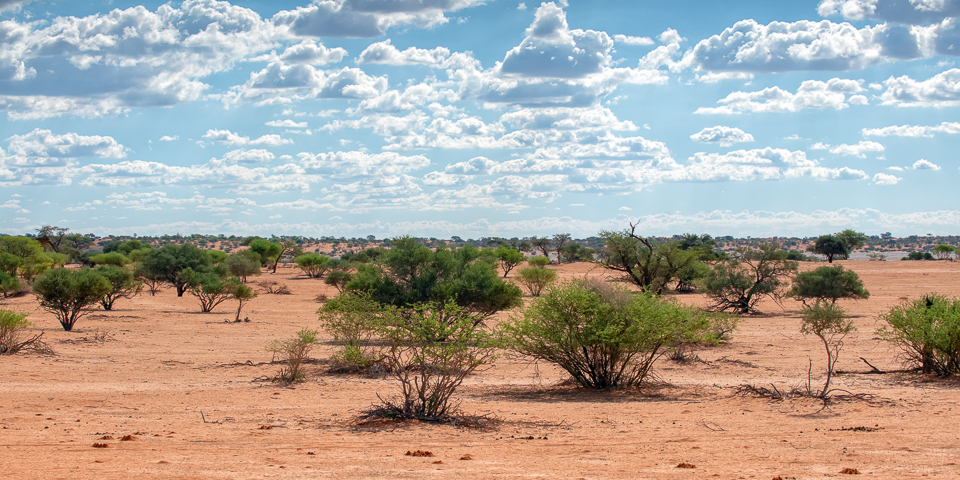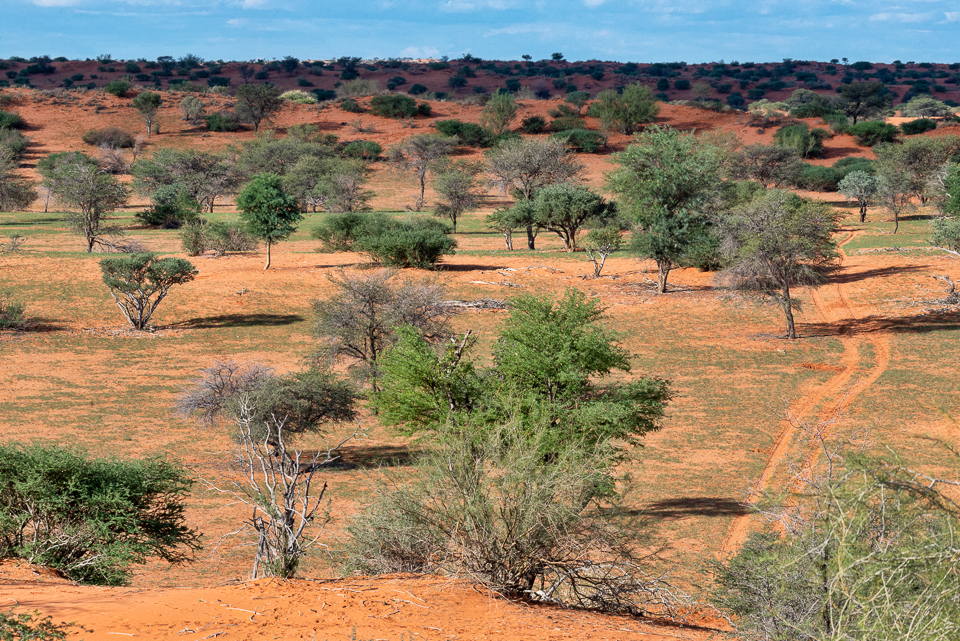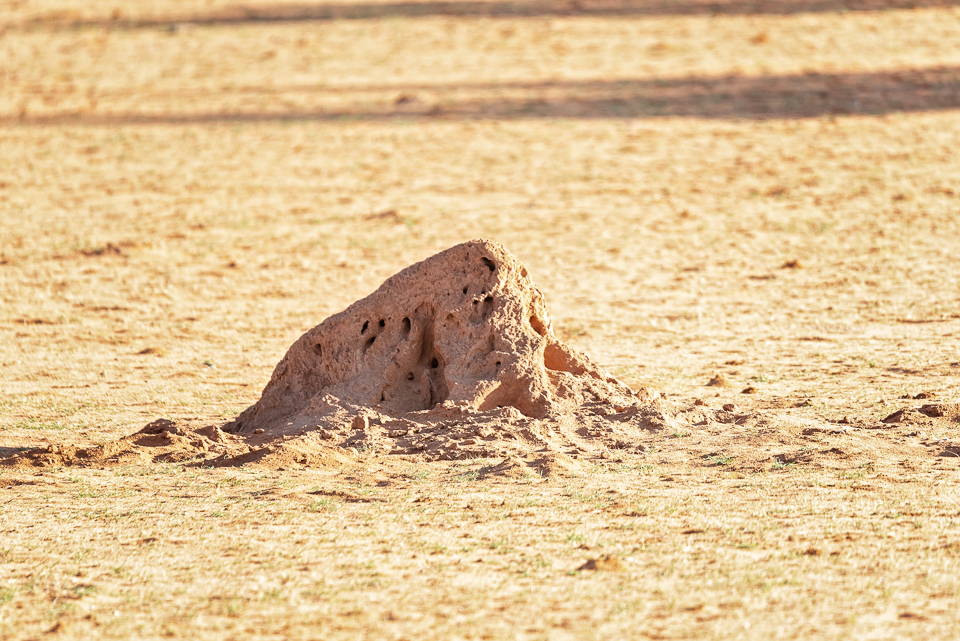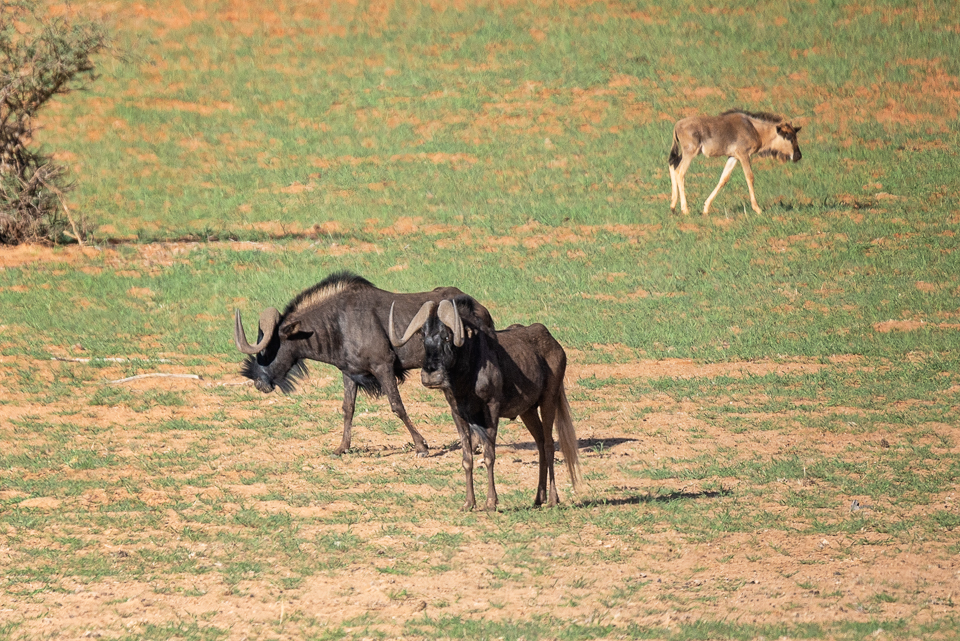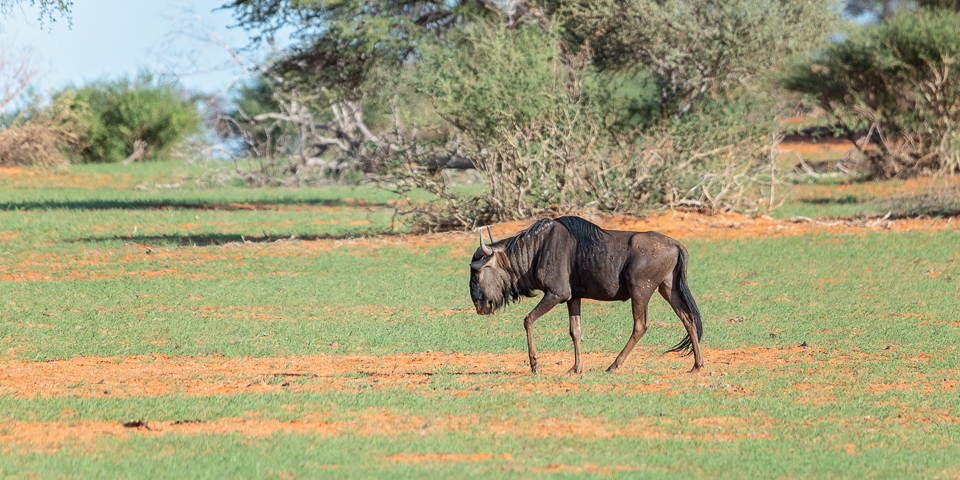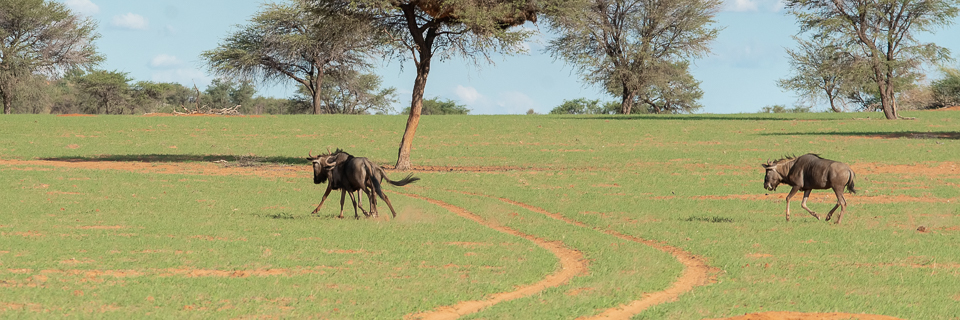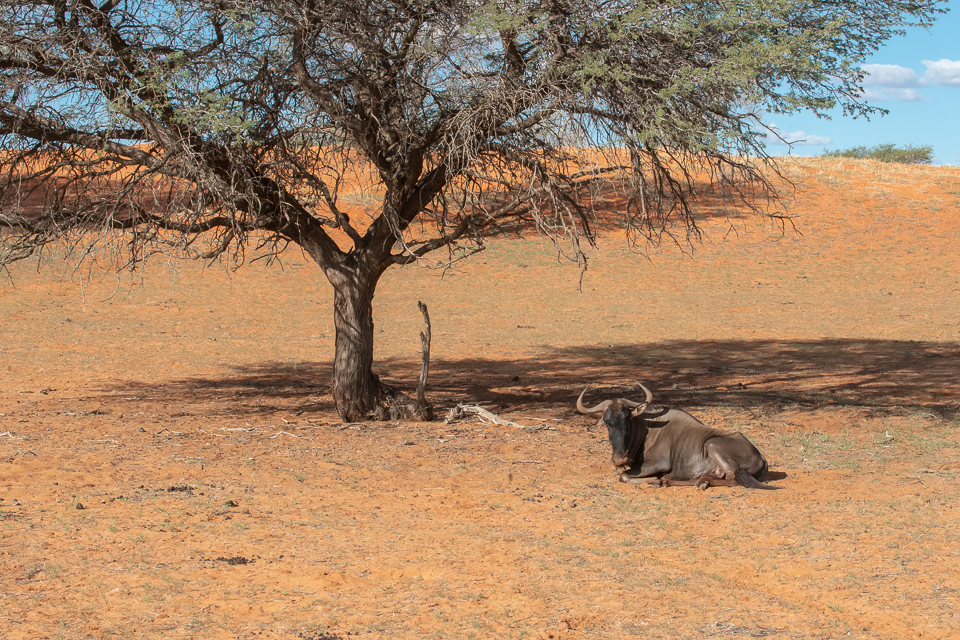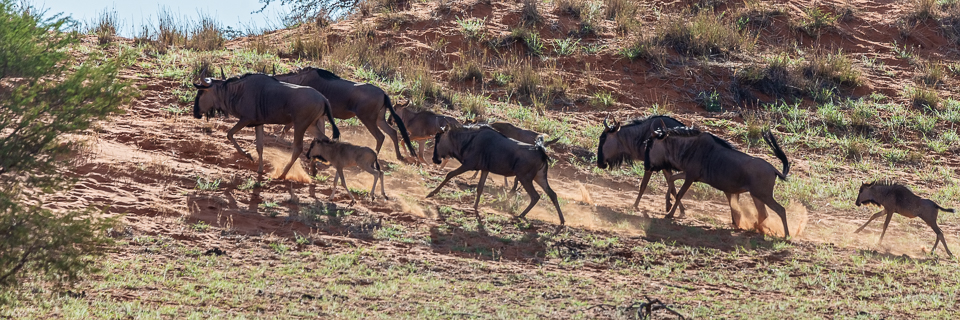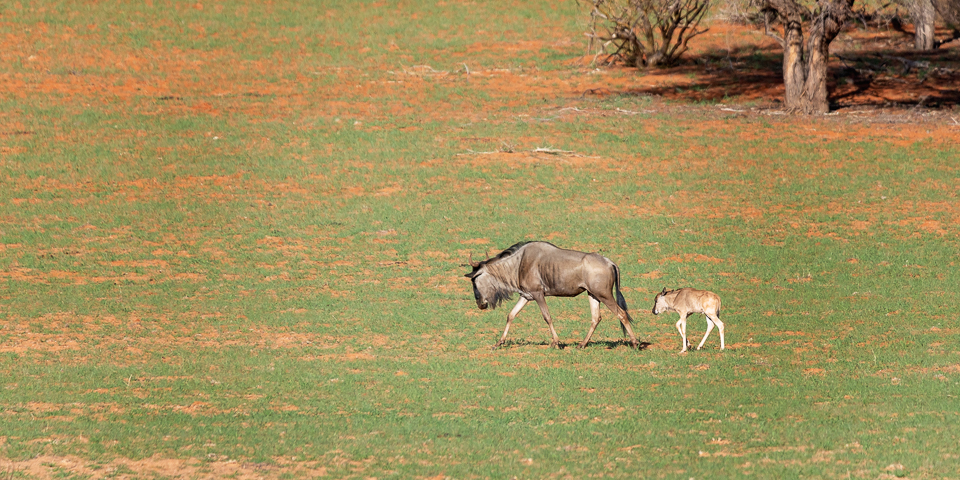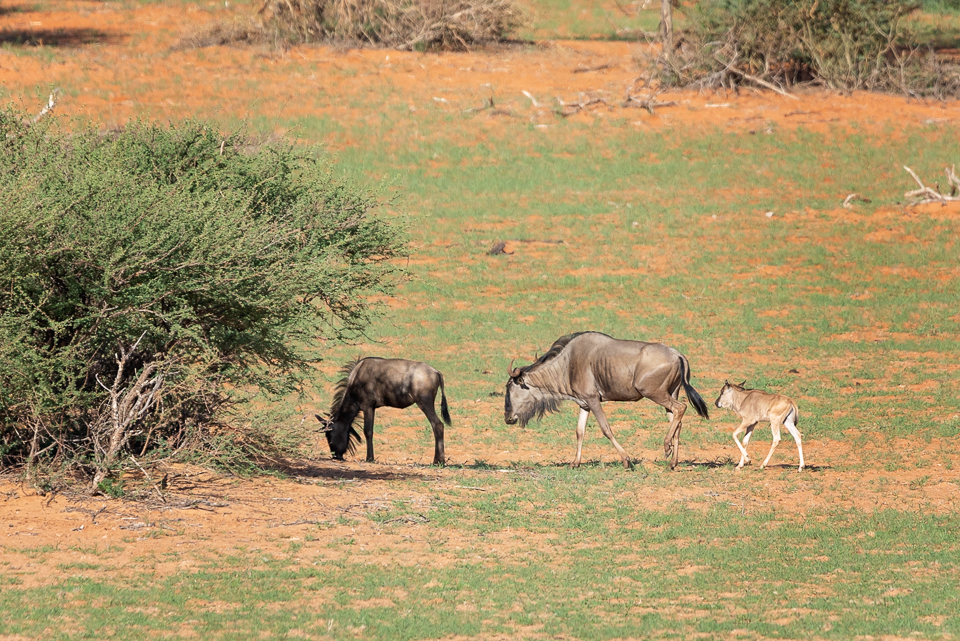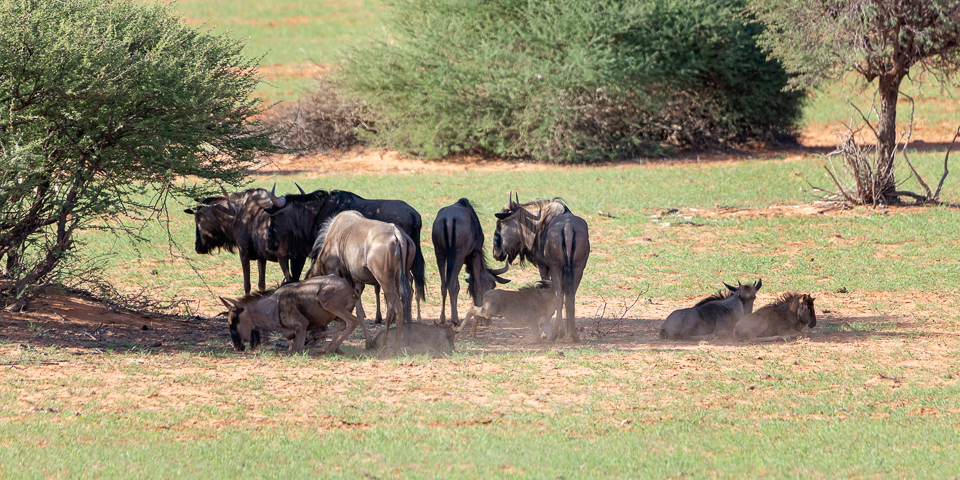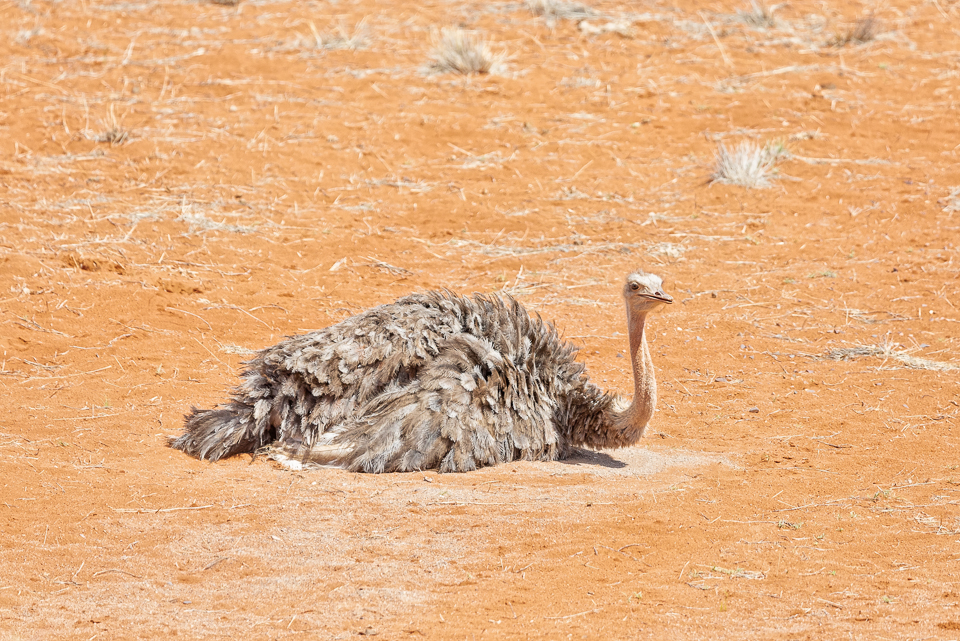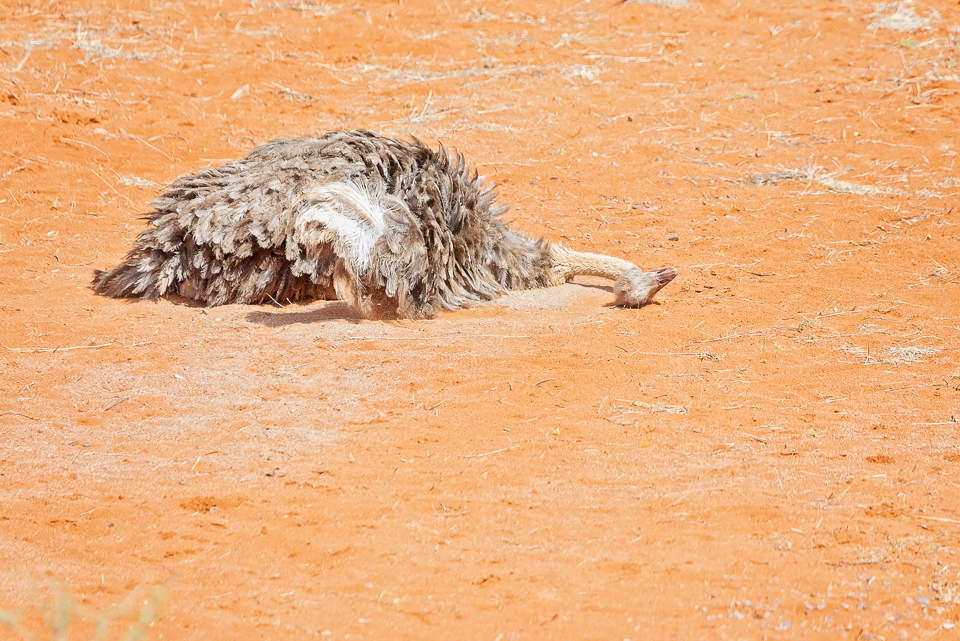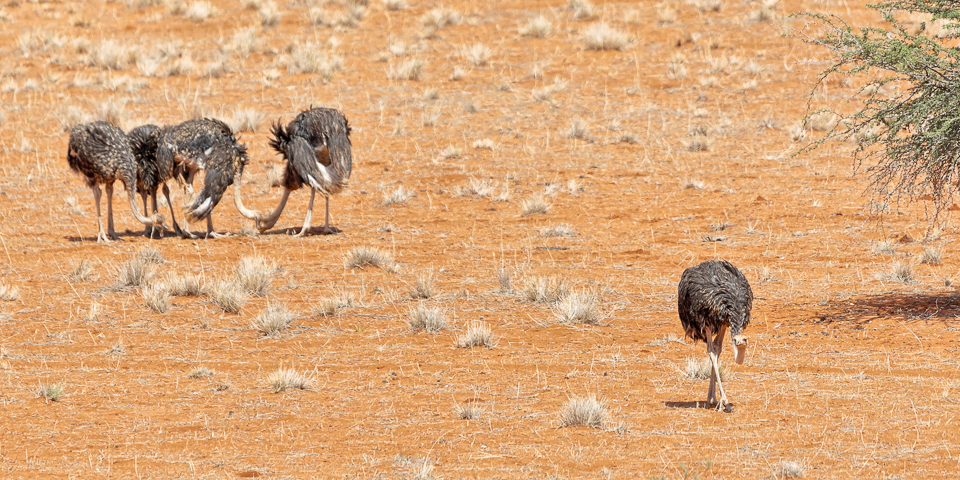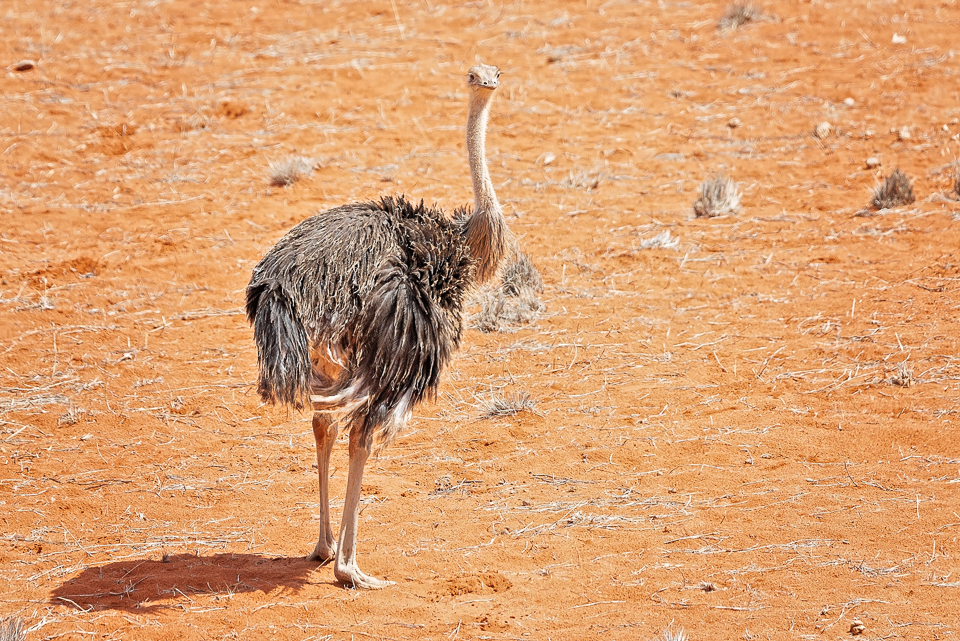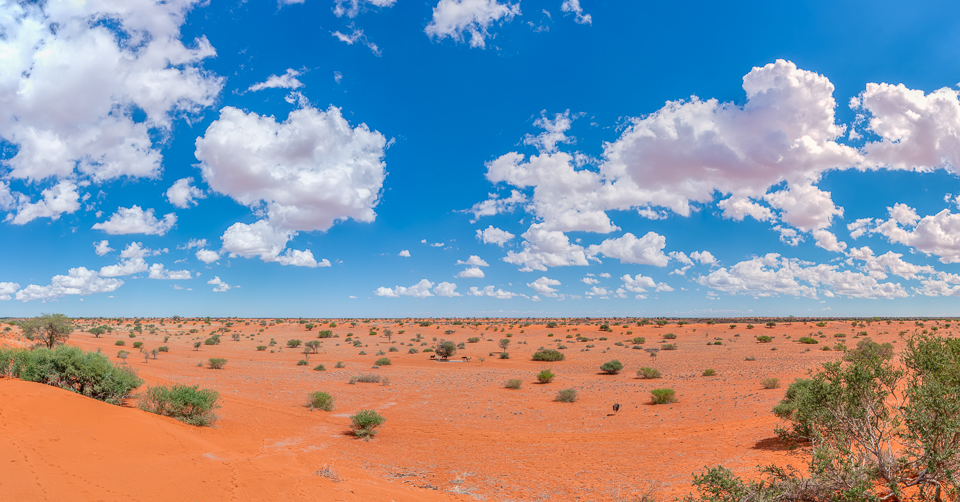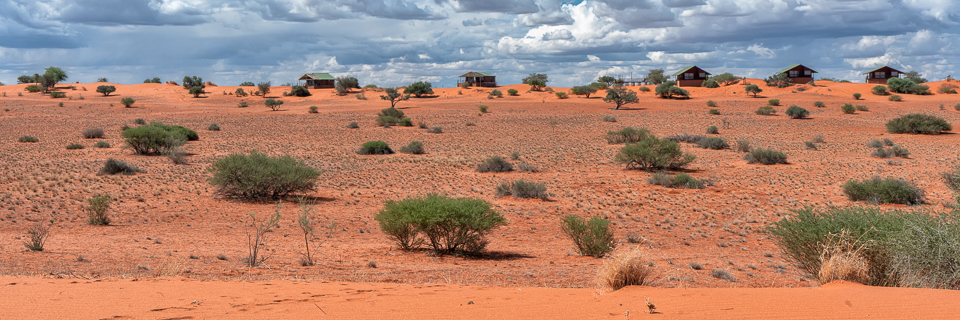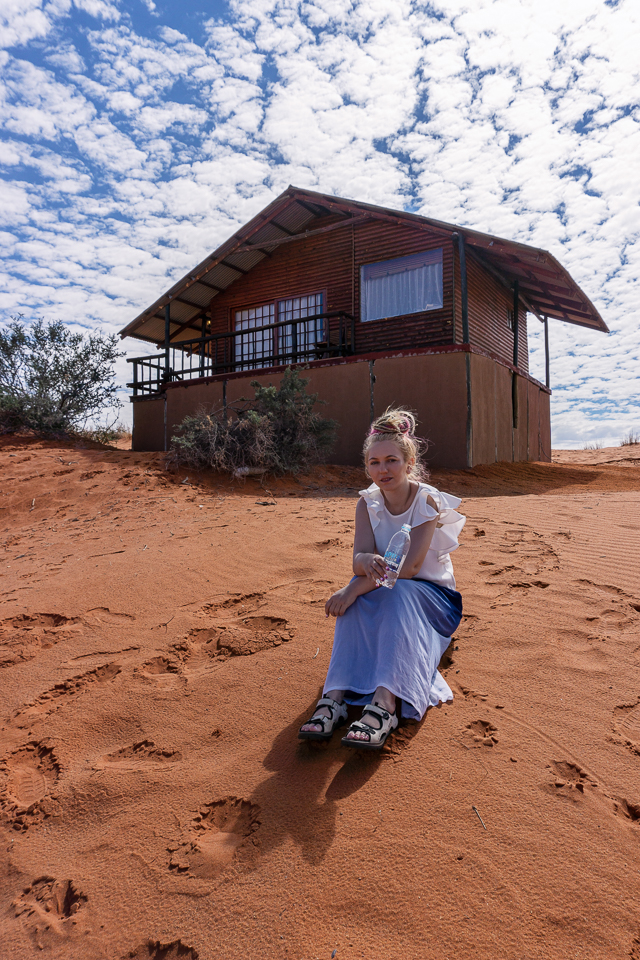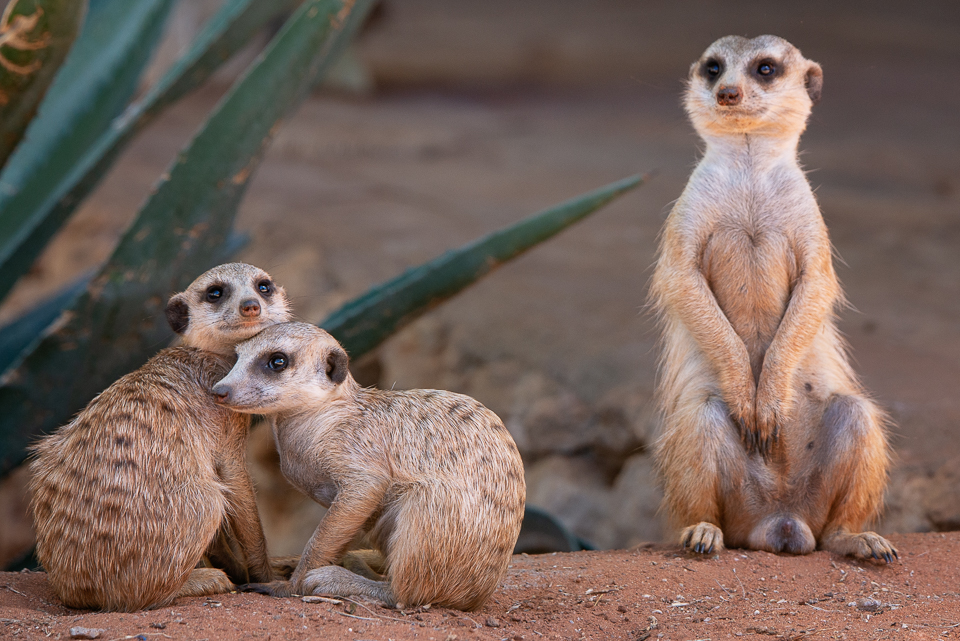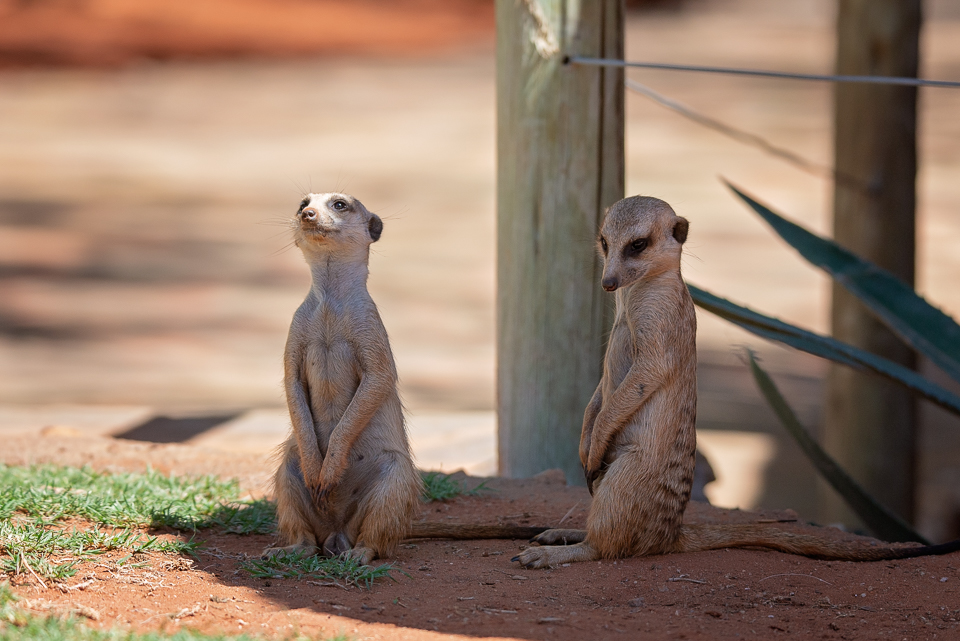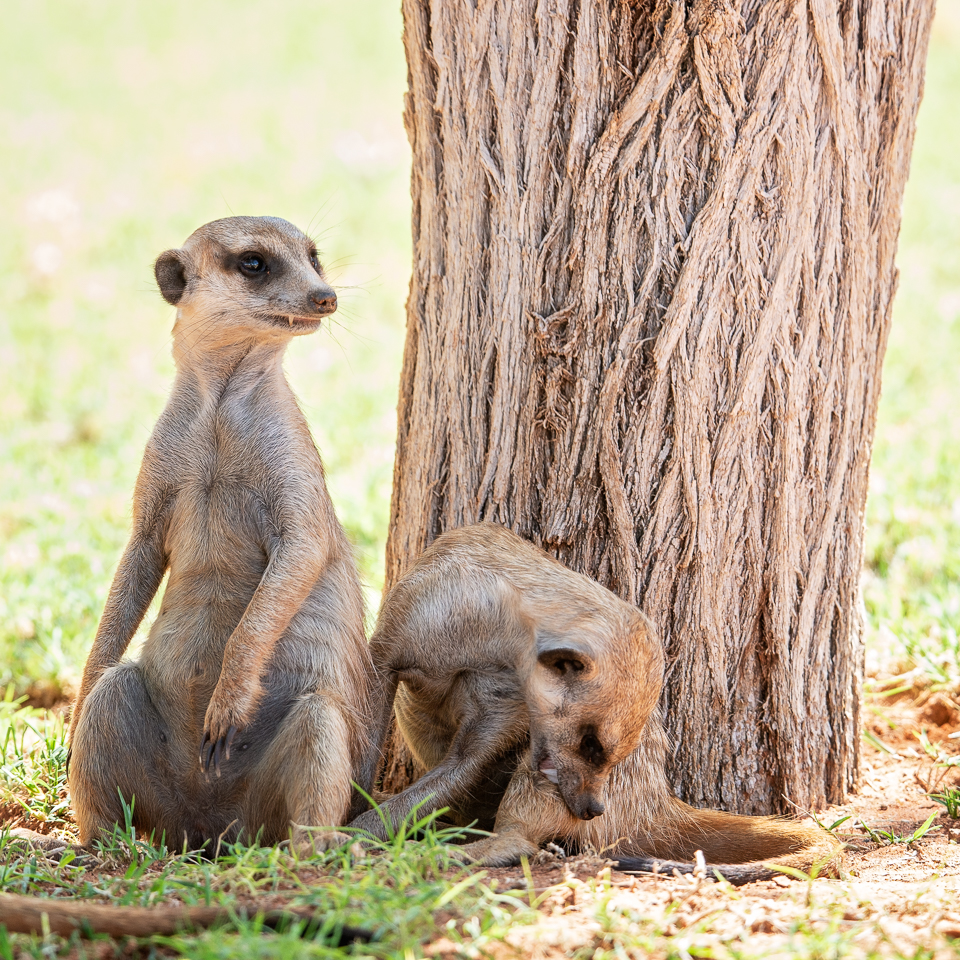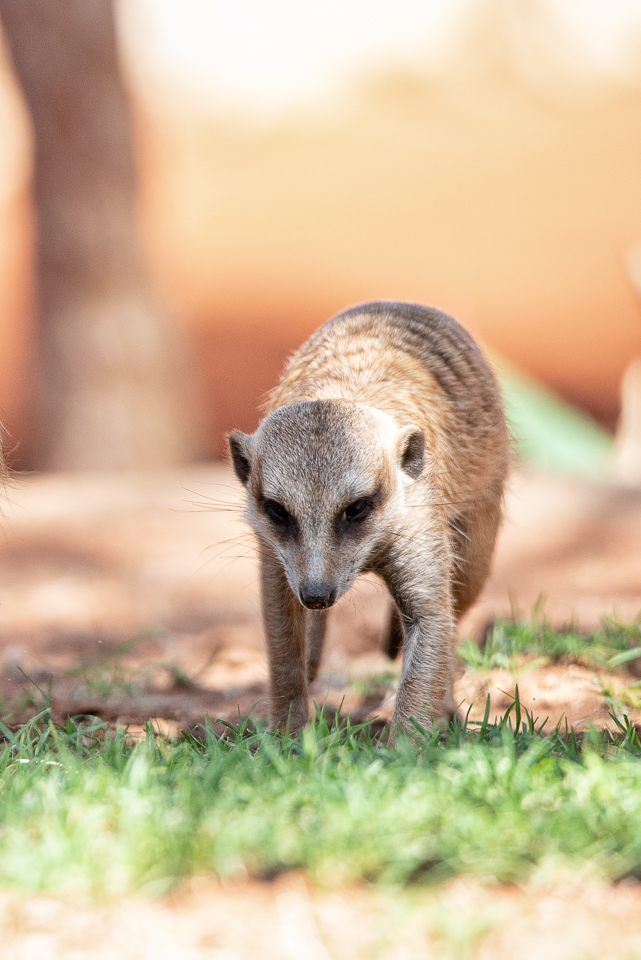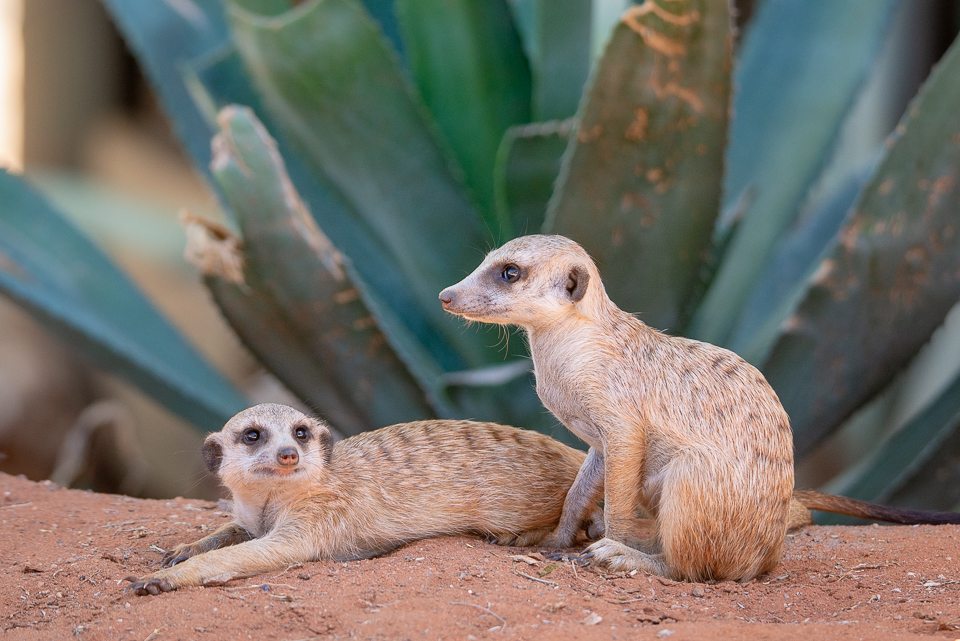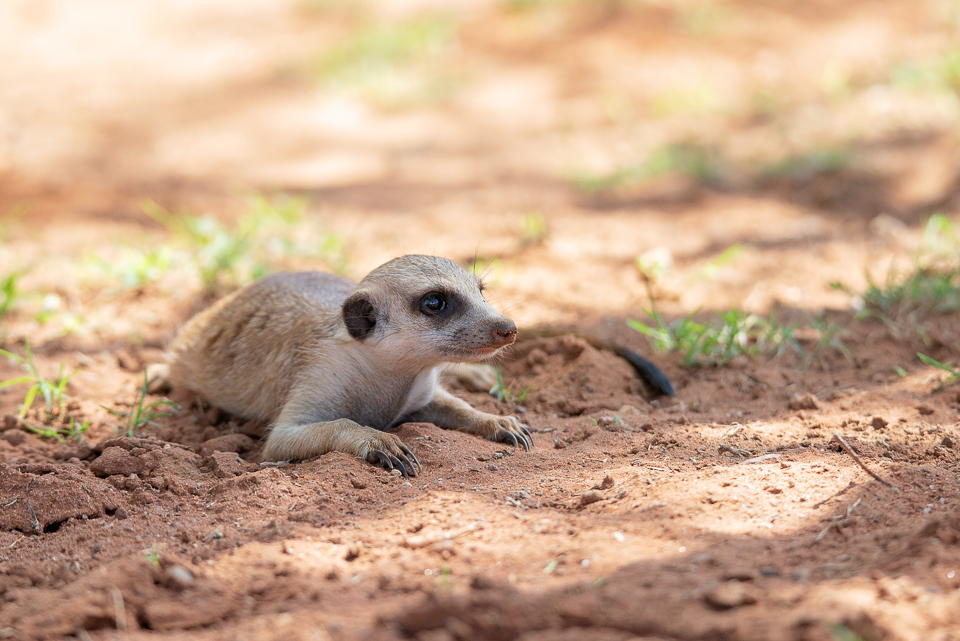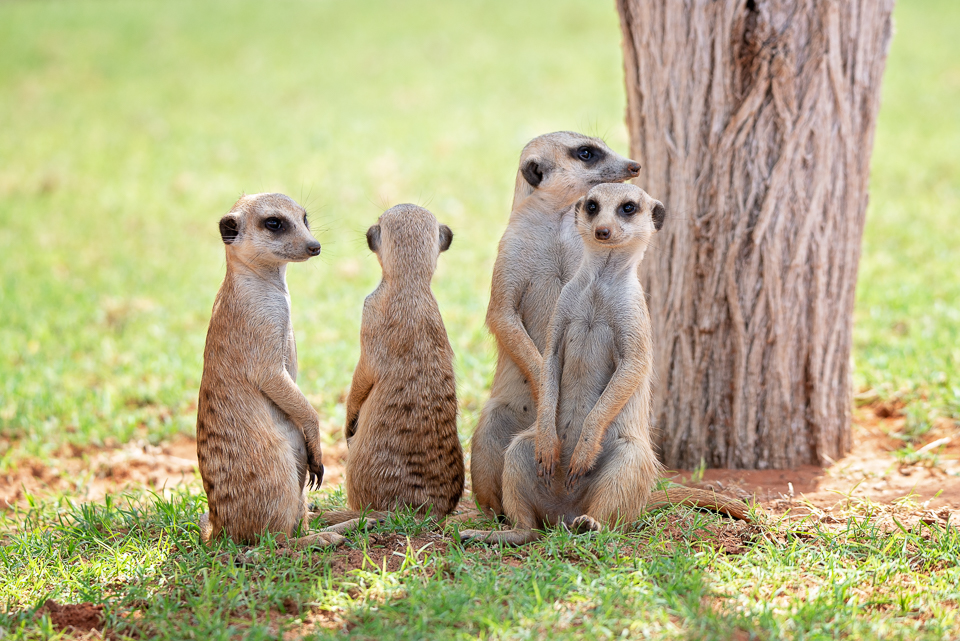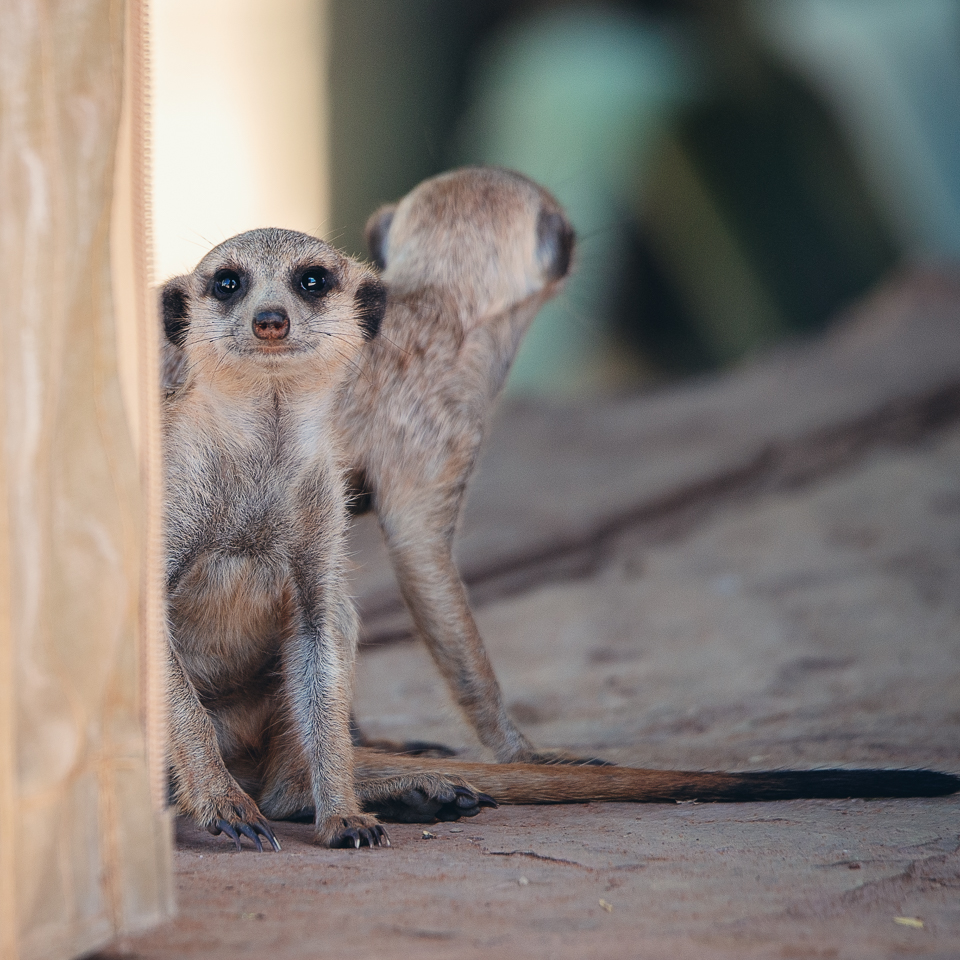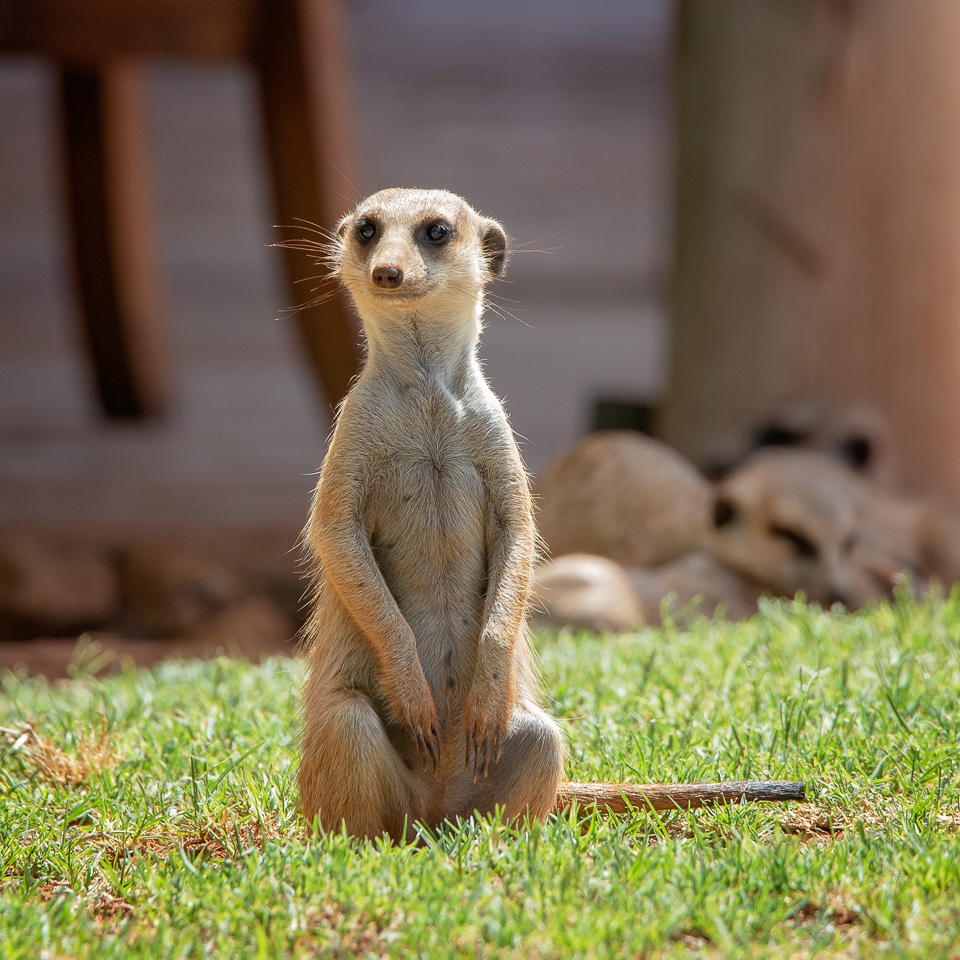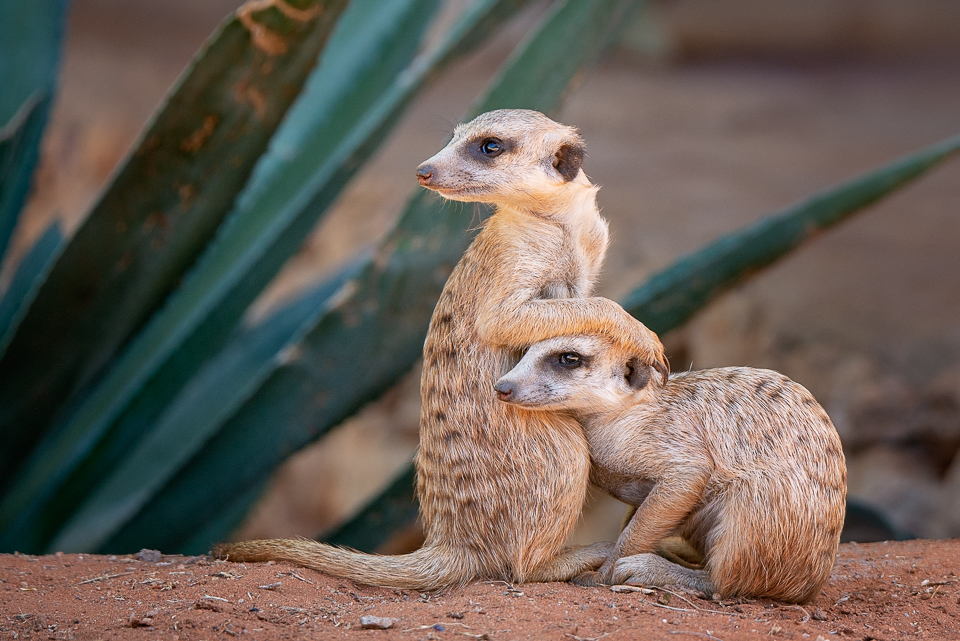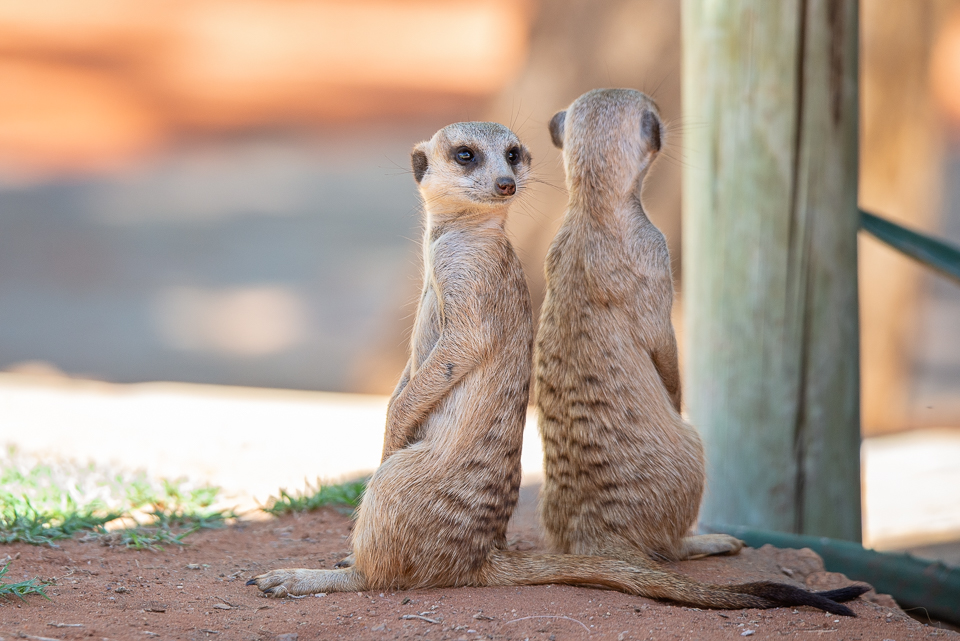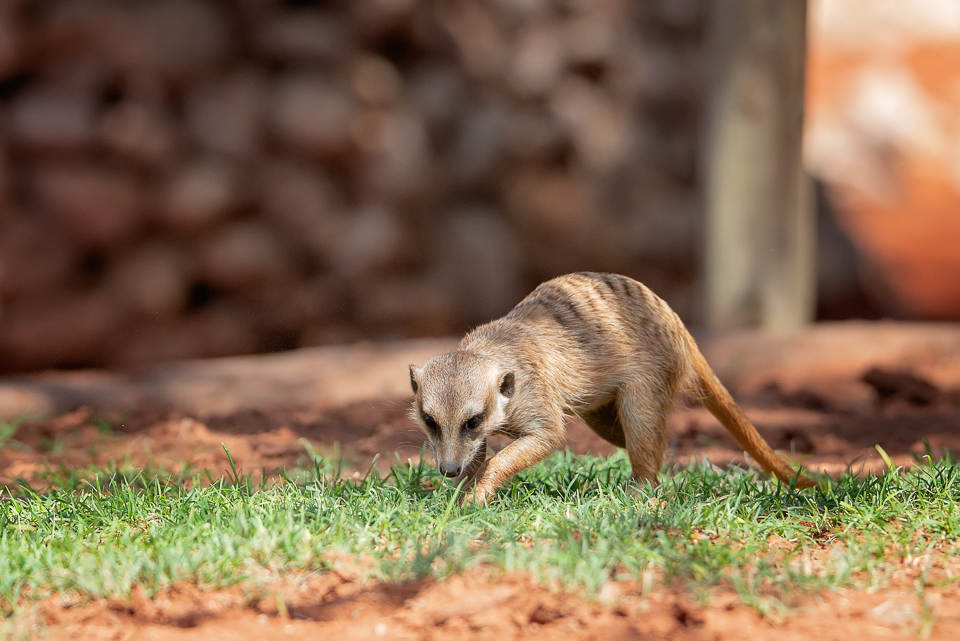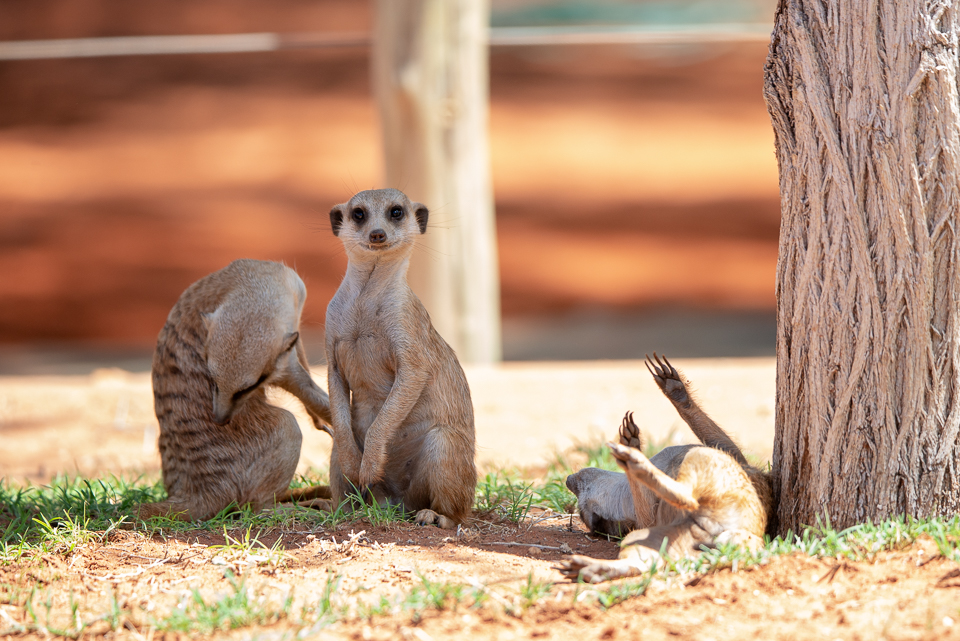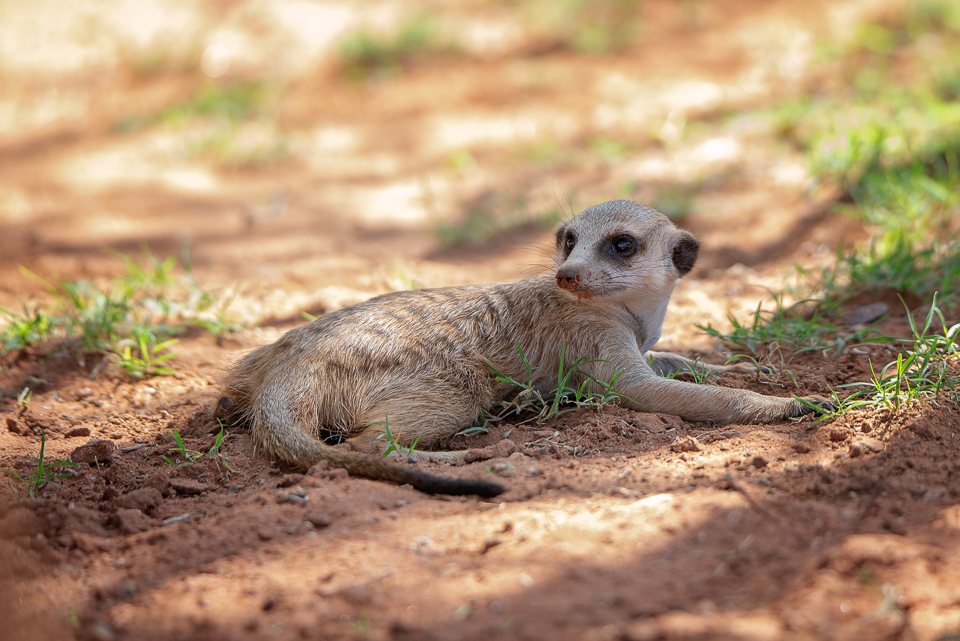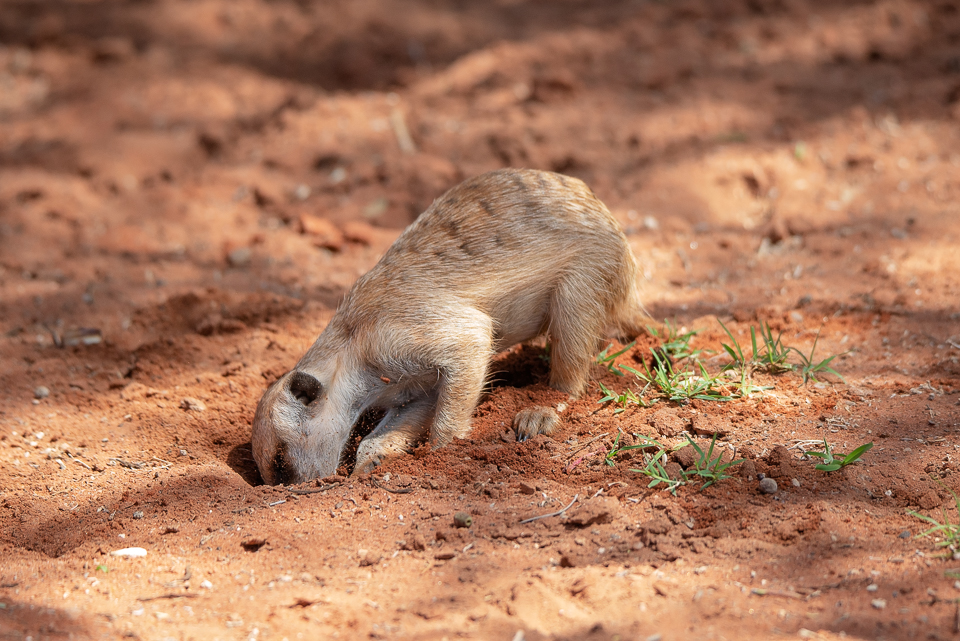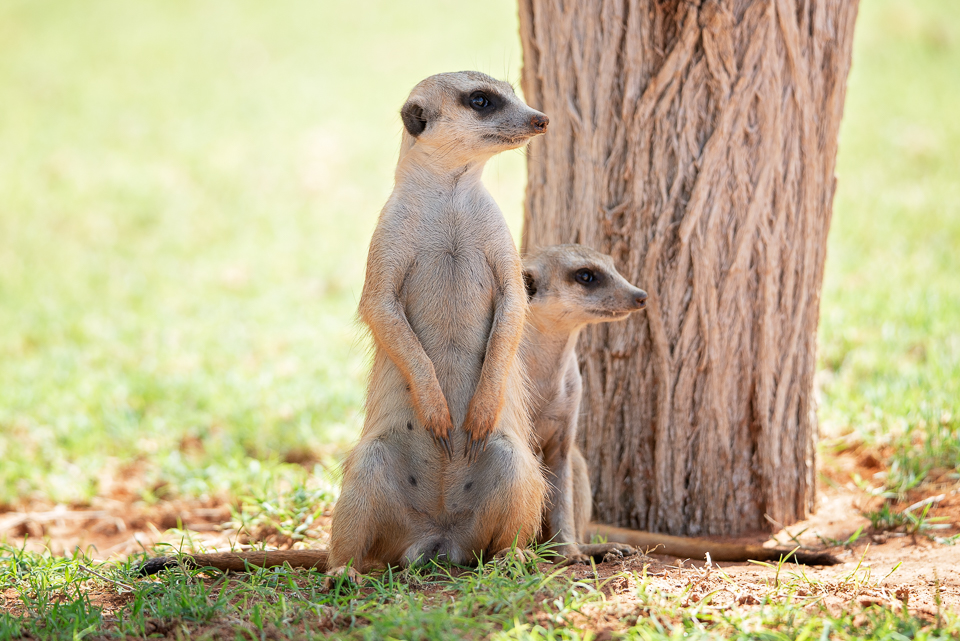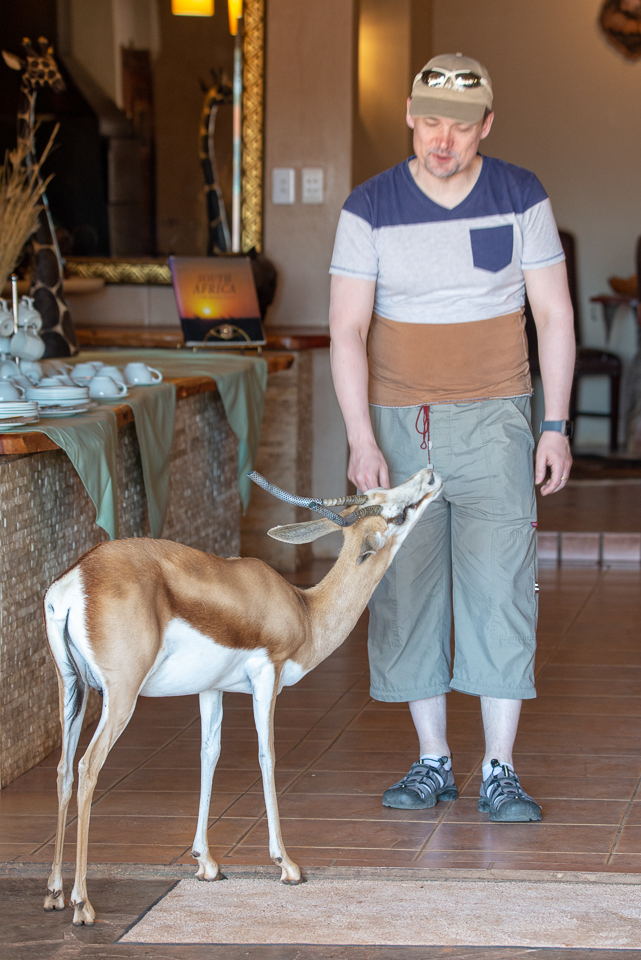Only a bit more than one hour and we arrive at the next stop in our South Odyssey - Bagatelle Kalahari Game Ranch. Our chalet is not yet ready when we arrive so it is time for a cold drink. But as soon as we sit down in the bar area outside the main building we are surrounded by a gang of meerkats. And this of course means that I run for the camera and am lost to the world for an hour or so whilst Marcin enjoys his beer or perhaps three.
Meerkats live in groups up to 50 individuals in underground burrows with many entrances (similarly like described before cape ground squirrels). They are extremely social animals. During the day they forage in a group with at least one sentry on guard scanning the sky and desert for predators (such as eagles, hawks and jackals) while the others search for food. Sentry duty is usually about an hour long. If sentry senses danger, they will let out a high-pitched squeal, sending the mob looking for cover. Meerkat calls may carry specific meanings, with particular calls indicating the type of predator (aerial vs terrestrial) and the urgency of the situation (high, medium or low).
Like it is common in many various species, meerkat babies learn by observing and copying adult behaviour. But what is not that often seen in animals, meerkats engage in active instruction, playing role of teachers. Let's take foraging and hunting for insects and small animals as an example. Meerkat youngest babies do not forage for food - adults bring dead animals to feed them. But as the pups grow older, they start following an older member of the group who acts as their teacher. Teachers start to bring live prey to them but they disable it first. For example, if it is a scorpion the teacher would bite the sting off before pups can try to eat it. Then, finally, young meerkats start to plead for a chance to hunt their own dinner and the teacher will allow them to have live prey and deal with it all by themselves under their supervision.
Tylko nieco ponad godzinę zabiera nam dotarcie do następnego przystanku w naszej Południowej Odysei – Bagatelle Kalahari Game Ranch. Nasz domek na wydmach nie jest jeszcze gotowy, więc idziemy napić się czegoś zimnego do baru przy basenie. Pierwsze co widzę, to całe stadko surykatek, wiec wracam do samochodu po aparat i w zasadzie od tego momentu nie ma mnie dla świata, podczas gdy Marcin wypija sobie zimne piwko. Albo trzy. Nie wiem ile, bo byłam całkowicie pochłonięta surykatkami.
Surykatki są zwierzętami bardzo społecznymi i zwykle żyją w grupach od kilku do kilkudziesięciu osobników - najczęściej jest to spokrewnione ze sobą potomstwo pary alfa. Mieszkają w dużych podziemnych norkach z wieloma wyjściami, podobnie jak afrowiórki namibijskie, z którymi zresztą czasami dzielą wspólne norki. W ciągu dnia surykatki idą w grupach szukać jadalnych roślin i grzybów oraz polować na insekty, skorpiony, węże i inne małe zwierzęta. Co najmniej jeden osobnik staje wówczas na czatach wypatrując zagrożeń, takich jak zbliżający się orzeł, jastrząb, czy szakal. Jego dyżur trwa mniej więcej godzinę. Jeśli wypatrzy zagrożenie, wydaje charakterystyczne wysokie dźwięki, ostrzegając rodzinę, przy czym dźwięki te są inne jeśli niebezpieczeństwo nadchodzi z góry (ptak) niż jeśli nadchodzi z ziemi (np. szakal). Ten alarm wokalny informuje także stado, jak duże jest zagrożenie.
Podobnie, jak często występuje to wśród różnych gatunków zwierząt, młode surykatki uczą się obserwując i naśladując osobniki dorosłe. Ale – co się znacznie rzadziej zdarza – dorosłe surykatki angażują się w aktywne nauczanie i przekazywanie instrukcji młodym. Dobrym przykładem może być właśnie polowanie. Surykatkowe niemowlaki nie wychodzą na powierzchnię, ich opiekunowie dostarczają im już zabite insekty i inne elementy pożywienia. Ale w miarę, jak zaczynają podrastać, zaczynają chodzić do surykatkowej szkoły życia. Tu ich nauczyciele pokazują im, jak polować i przynoszą im żywe, ale początkowo „unieszkodliwione” egzemplarze potencjalnie niebezpiecznych gatunków, na przykład skorpiony z odgryzionym już kolcem jadowym. Kiedy maluchy dobrze już sobie z nimi radzą, pod okiem opiekunów zaczynają same polować na normalne, nie uszkodzone skorpiony.

